Caprice Rolls-Royce
supermodel turned entrepreneur on success both on and off the catwalk
all-new SUV revealed
exclusive: Plus
MEET THE WORLD'S YOUNGEST SELF-MADE BILLIONAIRE
RALPH LAUREN TURNS 50
THE RICHEST MAN IN FASHION
Baselworld
discover the stars of the show


BUSINESS
p04. Making Billions
p06. Life After The Apprentice
p08. Death of the Traditional 9-5
p12. Bitcoin: The gift that keeps on giving
p16. Being Disruptive In A Notorious Industry
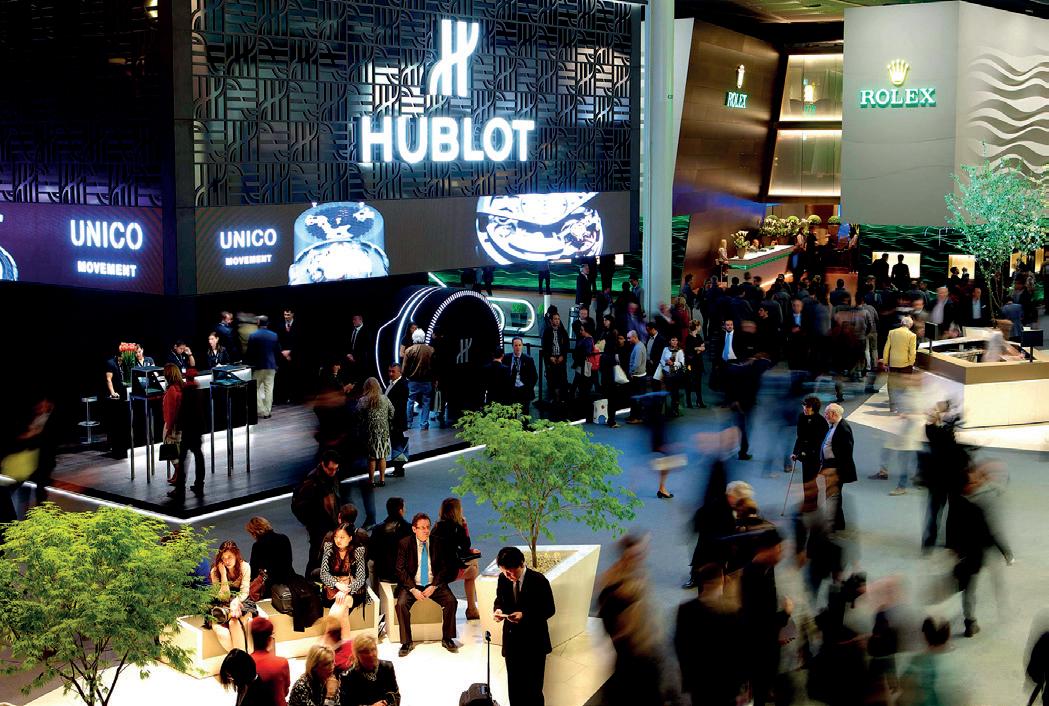
p18. Joined-Up Public Services
p26. Cyber Security Special
p28. Think You’re Ready For GDPR?
LIFESTYLE
p30. The New Range Rover SV Coupe

p42. Arrive In Style
p44. Fix Up Look Sharp
p46. Meet the Richest Man in Fashion

p48. Ralph Lauren Turns Fifty
p54. The Best Wireless Headphones
p56. Thai Delights
The Executive Magazine | 1
Contents
Rolls-Royce Cullinan Revealed p34
Caprice: Supermodel Turned Entrepreneur p02
Baselworld 2018: The Stars of the Show p50
Supermodel
Entrepreneur Turned
I’m a girl who came from a very humble background from a small town in Hacienda Heights, California. I didn’t go to university and I wasn’t bank rolled by anyone. Good old-fashioned hard work, passion, vision and the nerve to get out there and make something of my life is what drove me to the place I am today.
I don’t believe that a successful business is luck, I believe the harder you work the luckier you get. There are no short cuts.
I have been subjected to stereotypes in the past and over the past 11 year of running By Caprice Products I have had to prove myself in business. Not many people believed in the company's abilities but slowly I proved the ‘numbers’ and more stockists began to buy into the brand. This is not saying retail is easy. Anyone working in retail knows how tough it can be. 'By Caprice' as a brand has continued to flourish and I am extremely proud of our achievements, but in the ever changing business landscape it is important for business owners to constantly analyse the market and strategise how they will grow.
Before I collaborated with Sadaqat I think it’s important to note I had built a business that was actually making money but I didn’t have the infrastructure to grow the business accordingly.
Also, a lot of the time in business the problem is people can become shortsighted, especially if your business is starting to make money, budding entrepreneurs be warned.
Sadaqat are the world’s leading textiles suppliers and enterprises with offices in Manchester UK, London UK, New York and Australia. The licensing deal with Sadaqat was attractive an prospect for By Caprice Home. The business was going from strength to strength however I was trying to grow the brand to meet growing customer demand and I was trying to figure out an expansion plan/solution. Sadaqat have years of experience in the bedding world and they look after a host of household names including the licensing for Disney Europe. After months of meetings we decided to do a deal together.
Meeting the right partner was crucial. I am extremely hands-on with my business and it was so important to me that I have partners who have the same core brand values, integrity and passion as By Caprice.

Inevitably, it is better to have a small piece of an empire rather than owning the whole business on my own. I believe in order for a business to be sustainable their needs to be strong year-on-year growth and from a global infrastructure position, I understood the company limitations.
From a business perceptive the brand will be more lucrative, there will be higher returns and we are able to expand into more territories quicker and grow product offering more seamlessly.
Due to Sadaqat’s global market experience, we are able to cater to different regional tastes.
By Caprice Home are also now in a position to react to growing trends and customer demand more confidently and effectively. This is the next growth phase for the business and we can
Business
2 | The Executive Magazine
Caprice Bourret, former supermodel turned entrepreneur, writes for The Executive Magazine on her success both on and off the catwalk.
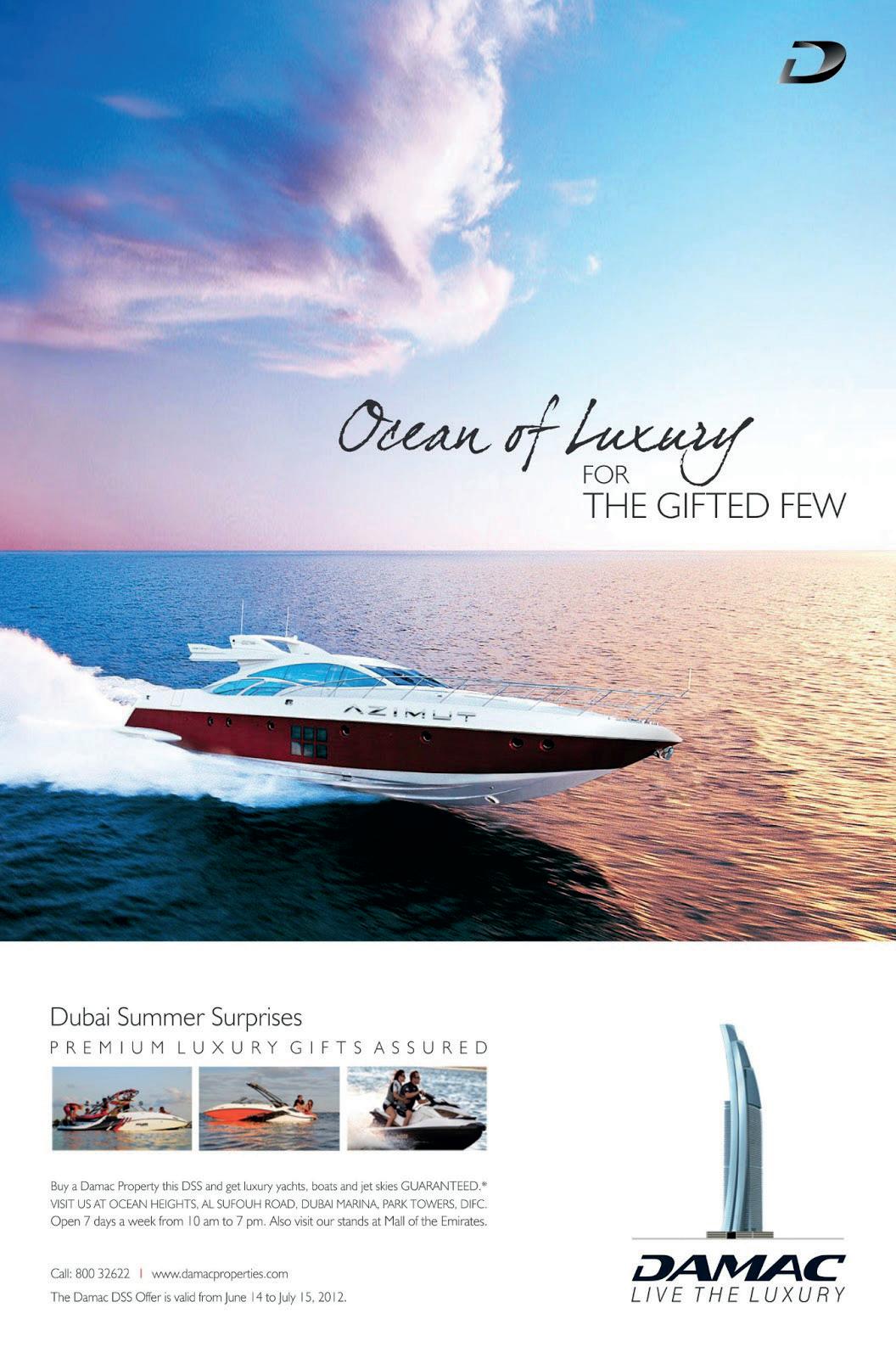
BillionsMaking
Meet the world's youngest self-made billionaire
John Collison is the world’s youngest self-made billionaire. From computer programmer in the UK to MIT graduate and serial entrepreneur, Collinson speaks to The Executive Magazine on his rise to the billionaire status.

JJohn Collison officially became the world’s youngest selfmade billionaire at 27 according to Forbes, and although seemingly confident and business focussed, he often gets awkward when it comes to the subject of money. We asked about his wealth, and he was visibly uncomfortable.
“People now ask this a lot and I feel like they always want some really interesting answer – and I have nothing for them.”
Born in Northern Ireland, John and his brother Patrick both dropped out of university, and wanted to explore their potential. They were both accepted into Massachusetts Institute of Technology and Harvard University respectively.
John says: “It was obviously easier for me because Patrick had already done it, but we’d both developed a bit of wanderlust.
“I had considered the UK, but that wasn’t far enough away, it wasn’t wandering enough. And both of us were studious, so going to a top college in the US was always tempting.”
Before moving to the States, as keen mathematicians and computer programmers, the pair built their first business together – Auctomatic –a software development company that enabled small firms and sole traders to trade more easily on eBay. The business was a huge success, and sold the company for £3.8m in 2008, just a year after they first set up.
Once graduated, Collison co-founded Stripe, a global merchant payment software company, which he runs from San Francisco. Stripe has amassed a huge customer base of over 100,000 throughout the world, with the company valuation coming in at £7bn after another successful round of funding. This puts the brother’s personal wealth at over $1.1bn each.
“People ask ‘how has your life changed?’, and they want me to have taken up some elaborate new hobby, like Faberge egg collecting or yacht racing.”
Instead he says he likes going for a run in his spare time, describing it as a “very practical, low maintenance hobby”.
Stripe was originally founded in 2011, but is not widely recognised outside of the tech world because it doesn’t sell any tangible products. Instead its software systems enable companies around the world to accept online payments more
Business
easily and integrate into eCommerce websites, automating the payments and orders process.
John says: “We came up with Stripe the way a lot of people come up with similar ideas – we were in the market for something like Stripe [that we could use].
“You might wonder what is hard about starting an [online] business. Creating a product that people actually want to buy, and getting them to hear about it, all that we could handle. But getting money from people over the internet was extremely difficult.
“I remember saying to Patrick ‘how hard can it be? Maybe we should give it a try?’.”
Despite a huge amount of competition, the brothers set about developing software that automates the online payment collection process, in a way that was safe, secure and simple to use and manage. The exponential growth caught the attention of tech heavyweights, and managed to secure funding from the likes of Elon Musk from Tesla, and Peter Thiel, founder of PayPal. This allowed the business to grow even more.
Stripe’s business model is very straightforward, for every transactions that is processed using the software, a percentage fee of the total amount is taken, along with a transaction fee of 20p.

With over 750 staff throughout the world, Collison is confident about the future of Stripe and predicts huge growth in the future:
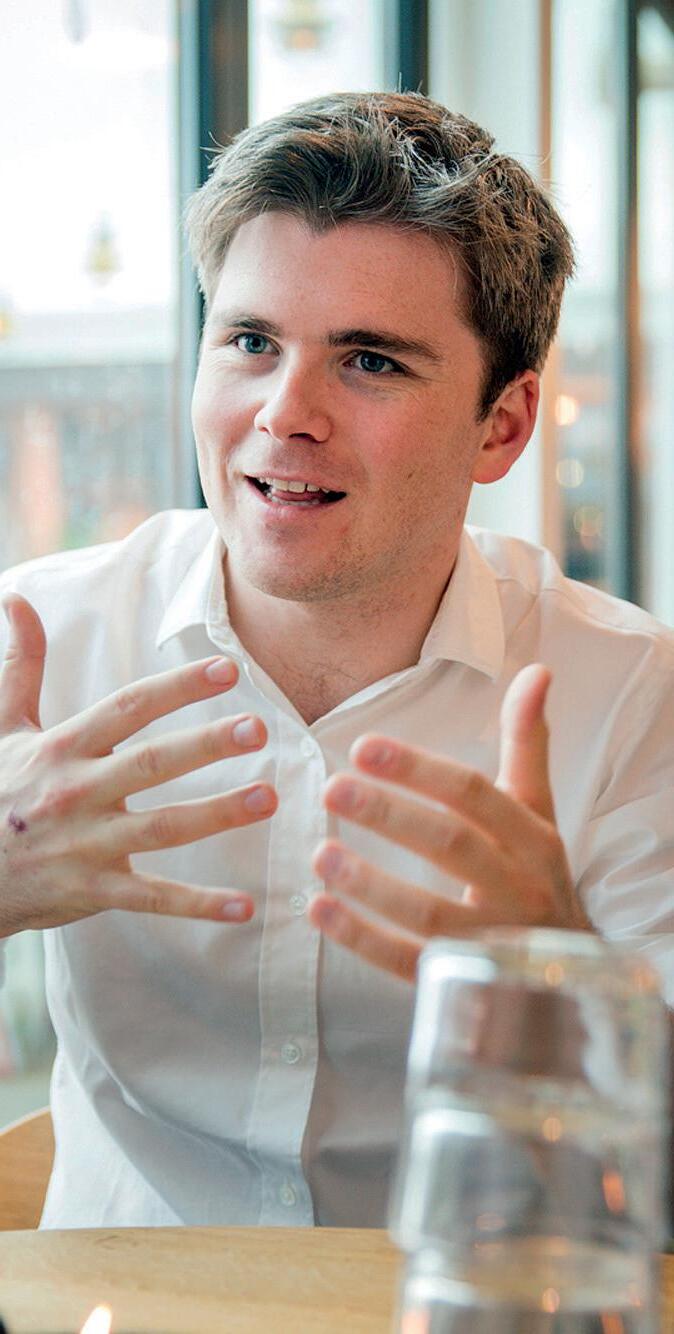
“Only 5% of consumer spending globally currently happens online, and we want to help increase that.
“We are indexed to the growth of the internet economy. As long as the internet economy continues to grow, Stripe will continue to grow.
“I don’t know about you, but I think that is a very safe thing to bet on.”
It’s clear that whilst Stripe is still a relatively young company, it’s here to stay, and the amount of attention it has gathered in such a short amount of means the software could become the industry standard. This would mean the valuation could soar even higher.
The Executive Magazine | 5
After The Apprentice Life
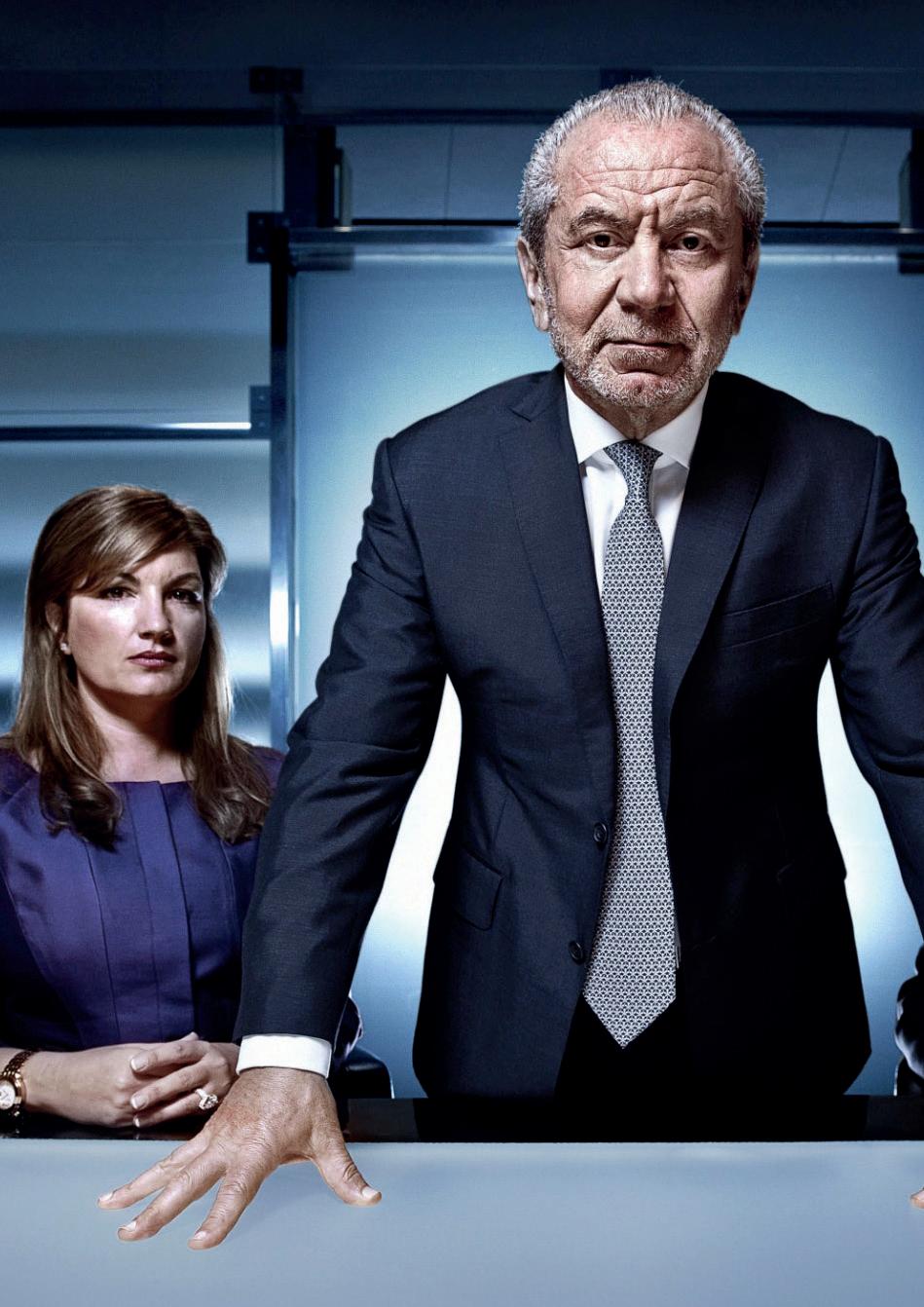
Business
P"Prior to appearing on the apprentice, I was a young adult with very little experience in the business world. One thing for sure, I was an opportunist. Whilst working on various 9-5 sales jobs I’d always look to advance my income outside of work because I took on the responsibility to care for my family of seven. Regular 9 to 5 jobs just weren’t paying the bills."
On being 'fired'
"So, Lord Sugar decided to give me the finger “you’re fired” however I left the process with great enthusiasm as the experience and kind words from the man himself gave me that extra determination to succeed in business and turn my dream of becoming a millionaire into a reality. I now had to grab the bull by its horns and set up a business without any capital."
What next?
"I was introduced by a good friend of mine into the mergers and acquisitions sector, after analysing the industry, I instantly knew this sector was made for me. Therefore, myself and good friend decided to set up International Business Acquisitions Ltd, and few years down the line we are now regarded as the go-to company for people looking to sell or buy a business. Due to our success we will be expanding our reach into the corporate finance sector come January 2018 under IBA Corporate."
How have you found running a successful business since appearing on the apprentice?


"It’s been the toughest experience of my life, everyone talks about how great it is running your own business etc however they don’t explain that 90% of the time you’re on an emotional roller coaster ride and only 10% of the time you’ll enjoy. Business is not easy, believe me, and not many people know this, I went through a mental breakdown to the point where my body and mind were exhausted, and I collapsed. I spent a night in hospital on a drip. However, having said that, the 10% is absolutely priceless and words can’t explain the feeling when things start to click, and you start to see the hard work develop into something special. Business is not for the faint hearted, be prepared for the up’s and down’s.
"The advice I’d give to anyone is to embrace and enjoy the journey of success, also work smarter and not harder!"
The Executive Magazine | 7 Apprentice
Death Of The Traditional 9-5

Business
Mara Patraiko, at Agency Central gives The Executive Magazine her tips for increasing activity, energy and creativity by falling into a more effective work/rest balance.
IIt’s so easy to slip, to get stuck in a rolling, ritual rut that has you grinding your teeth all day at your desk: the annihilation of exhalation. By five o’clock, the manifestation of afternoon lethargy has filtered fully down from your head to your tightly packed toes, and every part of you is ready to buckle.
You grab a couple of beers from the fridge (forward thinking prevents return trips), collapse from a height onto the sofa, put up your sore feet and turn on the TV. Yes, it’s another rectangular screen, but it’s doing all the work for you, so it’s totally different from your desktop computer. Your thumb duly switches between your email inbox and your facebook feed (at least refreshing is in there somewhere), as you lazily ponder whether the period between Eggheads and the news is enough time to microwave your multi-buy chicken tikka masala.
And why not? Why shouldn’t you be able to cocoon your stillsuited self in cushions until you and your phone reach a critical level of low battery and need to make the trip upstairs to recharge?
After all – you’ve been at work all day. Except, have you?
Whilst working nine to five is, as we all know, for service and devotion, when you think about it, it is only eight hours. Just one third of your day.
It sounds strange when it’s broken down like that. It did to me, anyway. It just seems like a comparatively small fraction to attribute all your energy, creativity and activity into. There are so many things in life that I feel excited about doing and achieving, but more and more I was finding myself making excuses on the understanding that I couldn’t do anything but collapse once I got in the door from work. At 6pm I found myself going through the motions to live, rather than living for going through the motions.
As a passionate person, realising that, broke my heart and made me see that something absolutely had to change.
These are the six steps I took to master the art of workday evenings.
1.Find and Designate a Restorative Place
Mine’s the bath. Yours could be a chair in the garden, the cupboard under the stairs, the dog basket, but it’s got to be somewhere peaceful and comfortable. Not silent necessarily, or dark, but comfortable. Somewhere where you can release the tension of the day one by one from your muscles and feel yourself slowly melt into whatever holds you. Grant your body the opportunity, and your mind the time, to consciously switch off from your working day. And do this every day. It may take five minutes, it may take twenty five, it may change. Allow for that.
2.Pursue Your Natural Interests
These aren’t things that you aspire to achieve, they aren’t things you feel you should have accomplished by now in your life. They are, in fact, the instincts that inspire those things. Instead of timing your run, or measuring it, or critiquing it, just run. Don’t squint and stumble through Rachmaninov, stopping each time you fail to stretch your fingers over an octave and a third, bash out some
power chords instead, improvise and see where it takes you. Do what feels natural – and, if that for you is Rachmaninov or the London marathon then congratulations, you’re astounding.
3.Just Say No
So, it’s the birthday drinks of one of your work friends. They’ve been giggling all week about getting tipsy on a Tuesday night: rebel, rebel. However, they’re not in that 8am meeting on Wednesday, and as you’ve bought a TV this month, Tuesday is your only chance to get cheap Dominos. If you did join them, would you be thinking about garlic and herb dip and Holby City? If so, SAY NO. Take care of yourself that night. Enjoy each and every calorie of that pizza. Breeze into that meeting on Wednesday having had plenty of sleep and send out an email invite for Saturday evening drinks instead.
4.Create a Pre-Sleep Ritual
When you wake up in the mornings, you get in the shower, sing along to the radio, down cups of coffee as if it was a Friday night and your cab to town had arrived early: you work yourself up for the day. But where’s that gradient when it comes to the evenings? Crashing onto your mattress at midnight and halfheartedly hoping that your automatic alarm clock is still automatic by morning isn’t going to do you any favours when it comes to a relaxing and securing a stress-free night’s sleep. Consider, instead, a ‘wind down ritual’. Listen to instrumental music. Read a chapter of a book. Drink a mug of herbal tea. Stretch. Breathe. And then sleep.
5.Turn Your Bedroom into a Sanctuary
Everyday starts and ends here, so make it a place that you want to be at the start and end of your day. Hardwood floors? Put rugs down at the sides of your bed so you’ll have something soft and warm underneath your feet when you get out of bed (yesterday’s damp bath towel doesn’t count). Keep the light low, the clutter down and the electronics out. Distractions are great while you’re waiting for the kettle to boil, or when you’re commuting – but not when you’re in bed. You don’t need distractions there. If you’re mind is fizzy and unable to settle for thoughts and anxieties, tire it out. Keep a journal by your bed and write them away. It’s all about blank spaces: use the blank space in your journal to offload upon. Use the blank space in your bedroom to settle upon. Use the blank space in your mind to sleep upon.
6.Look Forward
Every day, make sure you have something to look forward to that evening. Have a focal point whilst you’re at work, that just thinking about reminds you that from 5pm you’ll have it good. Indulge, once a day, in something. A long walk, an expensive milkshake, a scalding bath with a new trio of tranquil Tesco tealights. Do something ludicrous, do something simple, but every evening, do something.
When you return from work this evening, take a minute. Let yourself into the house, lean back against the front door and take sixty seconds to consider the course of your evening. Are you looking for something more tonight?
The Executive Magazine | 9 Business
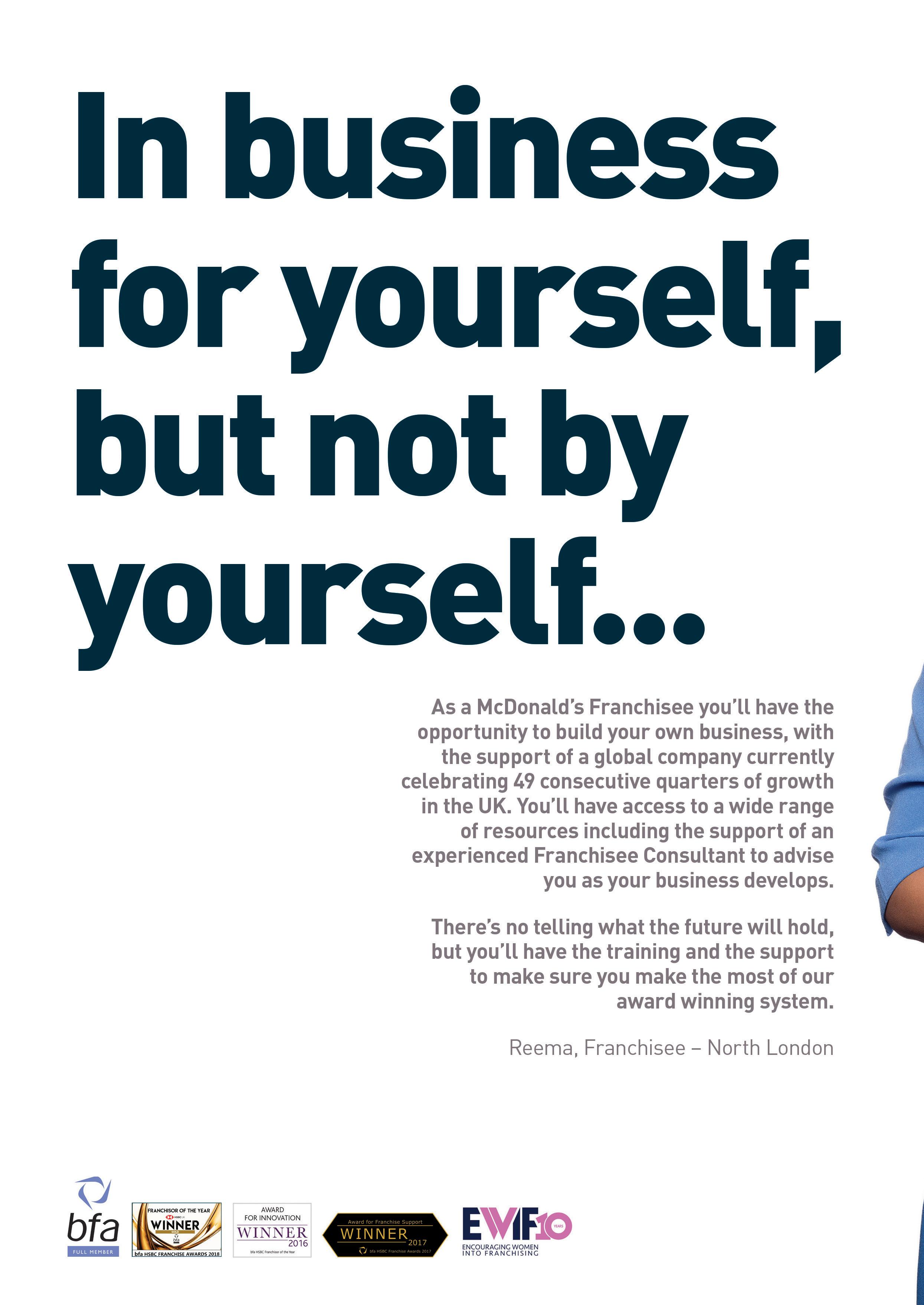
Come and talk to us at one of our Insight Days
5th- 6th October, Birmingham
19th October, Leicester
9th November, York

23rd November, Belfast
7th December, London
Register your attendance at www.mcdonalds.co.uk/franchising

m.
Bitcoin
The gift that seems to keep on giving
It’s the investment that everyone is talking about. Bitcoin, the gift that seems to keep on giving.

PPredicted to be a passing fad by many, myself included, staying in the realm of digital geeks, using it as another way of differentiating themselves from the masses. Or to be another investment bubble waiting to burst like all of those that have come before it. Let’s look at the global history of economic crashes that have surrounded investments in the past 100 years to see why so many predict this as a bubble fit to burst.
The Florida Real Estate Bubble which occurred between 1920 and 1925 was a speculative property bubble created by an economic boom in the US, and from that the enablement of the wealthy to travel for a holiday. Florida, was at the time, mainly swampland, but the glut of available cash meant developers were selling destination properties hand over fist. Lasting 5 years, the bubble created many millionaires before the crash that almost crippled the state’s economy.
That bubble was quickly followed by the famous stock market crash in America of 1929. An economic bubble had occurred, spurred on by the influx of new technology available, such as cars, planes and the radio. Again, people speculated heavily on
the back of this rise in innovation, often with borrowed funds, and whilst some became extremely wealthy, 1929 collapsed the banking system. This started the great 10 year depression which ended in the late 1930’s.
Then, unfortunately we had the second world war, lasting from 1939 to 1945. The middle east followed in 1982. In Kuwait, a market bubble occurred when Kuwaitis began investing in Gulf companies, in an attempt to follow the economic boom caused by oil in the middle east. A market, again supported by borrowed funds, where payment was accepted in the form of post dated cheques, allowed billions of dollars worth of investment paid for by an unsecured form of currency.
It initially reads worse than it should, note that in Kuwaiti culture, one cannot default on cheques, it brings shame to the borrower and all of their family, so this type of investment whilst not traditional by western standards, was ultimately allowed to continue.
However, as the unofficial market boom that ensued took hold, many shell companies that had previously not existed suddenly appeared, and with no regulatory body in place to govern what was going on, many underhand deals occurred forcing a huge bull market. Ultimately, as with allunsupported transactions, what
Business
12 | The Executive Magazine
goes up must come down and in 1982, when those post dated checks were unable to be cashed, the whole market collapsed leaving the investors indebted to the tune of $91 billion. This time, the Kuwaiti government didn’t step in as they had in previous times of financial difficulty, and under muslim rules, the investors had to bear the losses themselves. The equivalent of $90,000 for every Kuwaiti man, woman and child.
Not learning the lessons of history, the wall street crash soon followed the footsteps of Kuwait. After riding an extreme bullish market from 1982, backed by mergers hostile takeovers and leveraged buyouts, the stock market crash of 1987, historically referred to as Black Monday, saw the Dow lose 22.6% of its total value. It is still the largest 1 day crash in recent history. However, between 1986 and 1987 the Dow had actually doubled its value, so whilst the crash was a huge dent to the economy, investors that held their nerve still had made huge sums of money.
Not long after that bubble burst it was Japan’s turn. After riding a 30 year economic bubble, driven by the country focusing on automobiles and electronics after the war, in 1989 the stock and property markets began crashing. In 1992 the Nikkei registered at 15,000 points, down from its crest of 40,000 points at the height of this blissful period. The Japanese bubble, differs from the others mentioned here, as typically the pattern developing has been 5 years of growth and profit followed by a crash, or at least no longer than a 7 year period. All crashes have involved losses on the back of economies blossoming by the apparent ease of access to credit facilities.
Sounding familiar?
In 1995, Barings collapsed destroying a 233 year old institution and the Queens personal bank. Nick Leeson famously brought down the bank by hiding £827 million of unmonitored hedge bets.
After that follows the famous dotcom bubble of the late nineties and early 2000’s. Investors were speculative over the early dot. com shares floated on the NASDAQ, believing that a new era was being ushered in over the use of technology. Again, sounding as resoundingly familiar as the crash in America in 1929. Over valued companies, and excessive risk taking in companies who were nowhere near being in profit, saw an eventual crash reducing the index from 5,000 points down to around 1,000 points. An 80% loss on the index.
Finally, to bring my travel through bubble bursting history to a close, we have the recent global recession. The biggest global financial crisis most of us alive have witnessed. In August 2007,
here in the UK, the credit market went into a downward spiral. BNP Paribas froze assets of hedge funds exposed to the US subprime mortgage market and Northern Rock followed up with a run on their bank in early September – the first on a UK high street bank since the 1860’s. Although many people believe it was Alistair Darling’s fault for dithering over a statement to reassure the public that their savings were secure, ultimately, as the record shows, allowing banks to create their own products without proper governance and scrutiny only ends one way.
In truth, in many parts of the country, people are still in recession, with wages not reflecting inflation and the cost of living ever increasingly compounded of course by Brexit, are we potentially looking at another recession? But shining brightly amongst the doom and gloom is Bitcoin, rocketing daily ever skywards, lighting the way for investors to follow, and I’m sure as in all previous bubbles, many millionaires now lie in its wake.
But is it a feasible long term investment?
The investment in blockchain makes sense, the outdated legacy settlement systems and banking infrastructure have been long in need of an effective overhaul. In fact, coming from an investment banking background I completely understand how the blockchain will effect change for the good, but bitcoin is no blockchain. The blockchain has a long term investable benefit and is here to stay.
Bitcoin however, to all intent and purposes it is the very essence of a basic supply and demand product that has no intrinsic value, other than what someone else is prepared to pay for it. That in itself makes me nervous and brings a reluctance to invest in it. Fads of course are just that! Firstly, the Bitcoin is not supported by a commodity or backed by a government, you can mine more of the coin pretty much like quantitative easing and it seems like doing so at today’s exchange rate (6th December 2017) of 1 bitcoin = 9590.29 British Pounds is a steal. Whilst covering mining of the coin, there are already clamours from those focused on greener world activity, that mining the coin is having a disastrous effect on the environment.

Coindesk published an article in 2015 from an Australian think tank that reads Debate about the environmental effects of bitcoin mining has resurfaced following claims by an Australia-based sustainability think tank that bitcoin could eventually consume 60% of annual global electricity production.
According to the Long Future Foundation's website, its
The Executive Magazine | 13 Business
calculations are based on the assumption that 1 BTC is valued at £1m, the cost of mining this resource is $500,000 and 3,600 bitcoins are produced every day.
“Bitcoin miners can get power cheaply for $0.05 per kilowatt hour (kWh) which means that they get 20 kWh per dollar spent”, notes the website.
By multiplying these numbers (500,000 x 20 x 3,600 x 365) on its Bitcurrent calculator – an interactive spreadsheet – the foundation arrives at the conclusion that bitcoin mines would consume 13,140,000,000,000 kWh – or 13,140 terawatt hours (TWh) – per annum, or the amount of energy required to power 1.5bn homes.
Secondly, Bitcoin is finite! There can only ever be 21,000,000 coins and there are around 16,000,000 in circulation right now, (4th December 2017). So Stephen Goss CEO of Zeeto, a data discovery platform writing for Fortune.com compares it to investing in Fine art, he writes. Like Bitcoin, a great painting has no asset-backed value, but it is a scarce resource. Even my finest work is worthless because there is no demand for it. When an auction house estimates the value of a Picasso, it doesn’t do a fundamental analysis of what the paint, the canvas, etc., is worth. Instead, it attempts to predict the demand for the painting. If the demand wanes, the price goes down. If the demand waxes, the price goes up.

So this statement backs up what I previously said, it’s all based around a traditional supply and demand model, the limited numbers of Bitcoin, hyper-inflating the value. But so are the Nike Air Jordan Trainers I collect and I’m sure many readers aren’t interested in investing in those. Being one of the in-crowd right now can make you money, with a potential 5 million more coins up for grabs, it’s a market for now, potentially worth investing in, but that isn’t my recommendation in any way shape or form.
Fast forward to when these coins are all mined what happens then? The train hits a buffer, a fair few have the privilege of owning some limited bitcoins and the price potentially drops. If any of you have by then invested in any of the derivative investments popping up on the markets – and my gut immediately thinks credit crunch, how much do you stand to lose?
Also, when Bitcoin hits 21,000,000 let’s surmise that there is a decision to produce more. This again will dilute your current holding and devalue your investment, so I I can’t see a logical outcome other than something that currently bucks the trend, but effectively will become something akin to fine art, collectable but only of use to those who want it.
History shows we all love to buy or invest in something with limited purchase appeal, in fact, it forms the basis of all high price items of today. Provide a product or service, issue an expected expiry or restrict access to drive up the interest, complete the sale and then it’s on to the next thing.
So I haven’t bought into the current love affair with Bitcoin and I still believe the bubble will eventually burst. I do believe digital currencies are here to stay for the longer term, paper and metal currency will eventually be phased out. But digital currencies like Etherium aren’t finite and therefore have more to offer and also, you can simply create a new digital currency as and when you like. That again has its own pros and cons.
But something else will take Bitcoins place and we’ll repeat the cycle again. But for now, Bitcoin really is the gift that keeps on giving.
14 | The Executive Magazine


� ��FireEye· BREACHESAREINEVITABLE, BEING AHEADLINEISN'T. ' , INTELLIGENCE ANALYST www.FireEye.com © FireEye, Inc. All rights reserved.
Being Disruptive In A Notorious Industry

Ask anyone to comment on parking enforcement and the most likely response would probably be something resembling a grimace, possibly a few expletives but almost certainly not a positiverave.ItisthisveryreactionthatI’mdeterminedtochange.
To encourage a fresh perception, I want to help others become involved in and commit to my mission. As the founder and CEO of Gemini Parking Solutions, the UK’s only “values-based” Car Park Management Company, I’m determined to shake up the industry I believe in leading by example and hope to create waves that will ultimately mean that others will want to follow.
Industry wide there must be a sharper focus on customer service and accountability. Right now, the annual audits carried out by the regulators are geared towards compliance of processes and procedures. This approach removes any transparency to all but industry insiders. I believe that by leading with customer service and being focused on deliveringthe very best experiencethen the processes will naturally follow. The public would naturally benefit from knowing who is being the fairest and most responsive.
If you want to better understand the values and culture of a company you also must judge the person leading that organisation, this too is true of industry heads. How an industry
is governed and managed cascades down to all who operate within it.
As Albert Einstein once said: “The definition of insanity is doing the same thing over and over again and expecting different results”. To bring about positive changes, we have to begin to think differently, adopt a new approach that incorporates new ideas that challenge the status quo. This is what it means to be a disruptive entrepreneur.
I am not suggesting that the parking industry’s two regulating bodies aren’t fulfilling their requirements, but if we continue as we are, will merely bring about the same results. There must be a change in industry culture, we have to look towards the future, rather than being mired in the past. Innovation should be encouraged and not necessarily just from a technological perspective. We need to attract visionaries to the industry, company leaders that see beyond the norm and can inspire their workforce to be the best they can be.
Encourage personal development
If you want to grow a dedicated team, self-development for employees is vital. In my sector – as with all businesses –
Finance
16 | The Executive Magazine
Ryan Jackson, CEO of Gemini Parking Solutions discusses working smarter, embracing personnel, and changes in attitude in order to create a better working environment within your organisation.
personal development for individuals should be encouraged. Not just industry qualifications that, in truth offer no real value outside of the parking business, but self-education, that when embraced, will naturally promote excellence and higher standards across the industry. This is vital and is something that is systematically lacking within British business as a whole.
Encouraging operators to develop and engage with their teams at a more intense level will increase loyalty and empower colleagues. The parking industry suffers from some of the highest employee turnover rates in business. Developing your team whilst embracing new and creative learning architecture will go a long way to keeping them engaged and I believe, will prove transformative.
Diversity
Encouraging diversity is just as important. Parking industry events could sometimes be mistaken for a conservative party conference – the majority of attendees being straight faced, suited, white middle-aged men, with little humour and a vacuum of creativity and passion! Upping diversity across the industry could also increase attendance at these events. Opening the industry to representatives of the many more groups of people that make up our society will enable greater creativity and ignite forward thinking.
Championing diversity and inclusivity will not only generate increasingly varied and creative thinking at an operational level but at events, too. Offering value to car park operators, with inspiring content, engaging speakers and a genuine democratic voice that dispenses with the out-dated rule by committee and instead, encourages passionate debate, should be the essence of future parking industry events.
Historically the business, like many where change is feared rather than embraced, has always followed what has always been done. Now is the time to break that cycle. I like to see myself as being instrumental in bringing about part of that change and the work I’m doing in my company reflects that.

Encourage competition
Part of being a disruptive entrepreneur is to welcome rivalry. Competition in any industry is essential as it removes
complacency. Now’s time to actively publicise and promote the statistics that showcase company performance in the form of league tables, rather than just make them available to interested parties, as is the case in my industry now. As inconvenient as these may be to many industry heavyweights and influencers, it would seriously ensure that poor performers up their game and make serious efforts to climb the table. An added benefit would be that companies gain another reference point to benchmark themselves against.
Equally, good performances must be recognised, with companies receiving appropriate recognition for performance and standards. This must be judged by a thorough assessment and not just by the quality of an award submission pack. Those tasked with maintaining industry standards should understand that this approach and the framing of performance and standards, as sensitive and as seismic as this change may be, will in fact inform the public and those seeking parking management from private operators.
Rather than fear a shrinking of the parking industry, I embrace the improvement in quality and standards that this approach would bring about and the increased opportunities that would undoubtedly come the way of those that commit to a higher standard of practice.
Summary
There is no doubt that the parking industry needs to play catch up to other similar industries in terms of working smarter, embracing personnel and attitude changes that will be felt across the board. British Parking Association research, for instance, acknowledges that bureaucracy and a challenging parking industry image are holding back progress. I believe that if you want to make change that works you have to become that change and embrace it.
Ryan Jackson is the founder and CEO of Gemini Parking Solutions, the UK’s only “values-based” Car Park Management Company. A serial entrepreneur, Ryan’s passion is to build disruptive companies that shake up the status quo and pave the way for a new age of thinking in various industry sectors.
Find out more:
www.geminiparkingsolutions.com
The Executive Magazine | 17 Finance
Joined-Up Public Services: Has A Decade Of Confusion Caused Many To Miss The Boat?
Richard Hall, director at Edge Public Solutions, writes for The Executive Magazine on how more joined-up public services can benefit us all, and what opportunities may have been missed because of confusing legislation.

MMost commentators, experts, politicians and public sector workers can see the compelling benefits that would come from public services working better together. These benefits appear plentiful and obvious through the eradication of duplication, sharing of infrastructure, focussing on outcomes for the people they serve and essentially, as a result, saving lots of money.
Indeed our citizens commonly ask the question why Government and its many departments and services cannot operate more like John Lewis or Marks & Spencer with services which are easily accessible, in one place, and delivered from locations where people most need them.
The mission should therefore be quite simple. But it does not appear to be. Has Government been shooting itself in its many feet for far too long with the direction it has attempted to provide?
Let me admit that despite spending the best part of 10 years working to transform public services, leading collaborative change programmes across multi public sector services and regularly being asked to write analysis and commentary pieces on latest thinking I have often been thoroughly confused by this ‘joining up of public services’ thing.
I stopped short there of calling this thing ‘Total Place’. That’s because I detect the ‘thing’ is now being rebranded ‘Whole Place Community Budgets’. I think. I talk to many public sector managers and the mere mention of ‘Total Place’ is met with a rolling of eyes and knowing shakes of the head. But then so was ‘Area Working’ by anybody but the most senior of Director. So maybe it was time to move on and call the ‘thing’ something different.
In an attempt to understand what has happened over the last 10 years, to try and offer some clarity to what this ‘thing’ is all about and offer up some insight on a recommended way forward
let’s take a journey back through time to the beginning of the century when public services were a little more flush with funds.
In the early noughties the ‘thing’ appears to have been all about local authorities giving more power and influence to local communities. This culminated towards the end of the decade in the policy Green Paper No 9 ‘Returning Power to Local Communities’ issued by the Conservative party which set out plans to give local people more power over local government and to give ‘local’ people more ability to determine spending priorities by devolving funding to local areas.
Many local authorities had a flirtation throughout this time with what was known as ‘Area Working’. Essentially how could they divvy up some of their services and allocate them to smaller community areas where those communities would then be able to have a bit more say in how they were run and therefore keep citizens happier? Some authorities tried to actually allocate delivery teams to local areas. Others devolved some funding and decision making. In many cases it started and ended with streetscene type services. Some local authorities had a go at forming local neighbourhood boards to make decisions and others kept central control but allowed services to respond to local demand more flexibly. At this point efficiency and saving money didn’t really come into the equation and working with other public services albeit an aspiration remained to all intents and purposes an aspiration.
At the same time, some say working in parallel, some say totally seamless and some say quite separately to Area Working we saw the promotion by Communities and Local Government of the initiative, Total Place. Whilst this initiative was still about allowing greater control by local areas and communities it appeared to add greater emphasis to how services across the public and third sectors could work better together to provide better outcomes
Public Sector
18 | The Executive Magazine

Public Sector
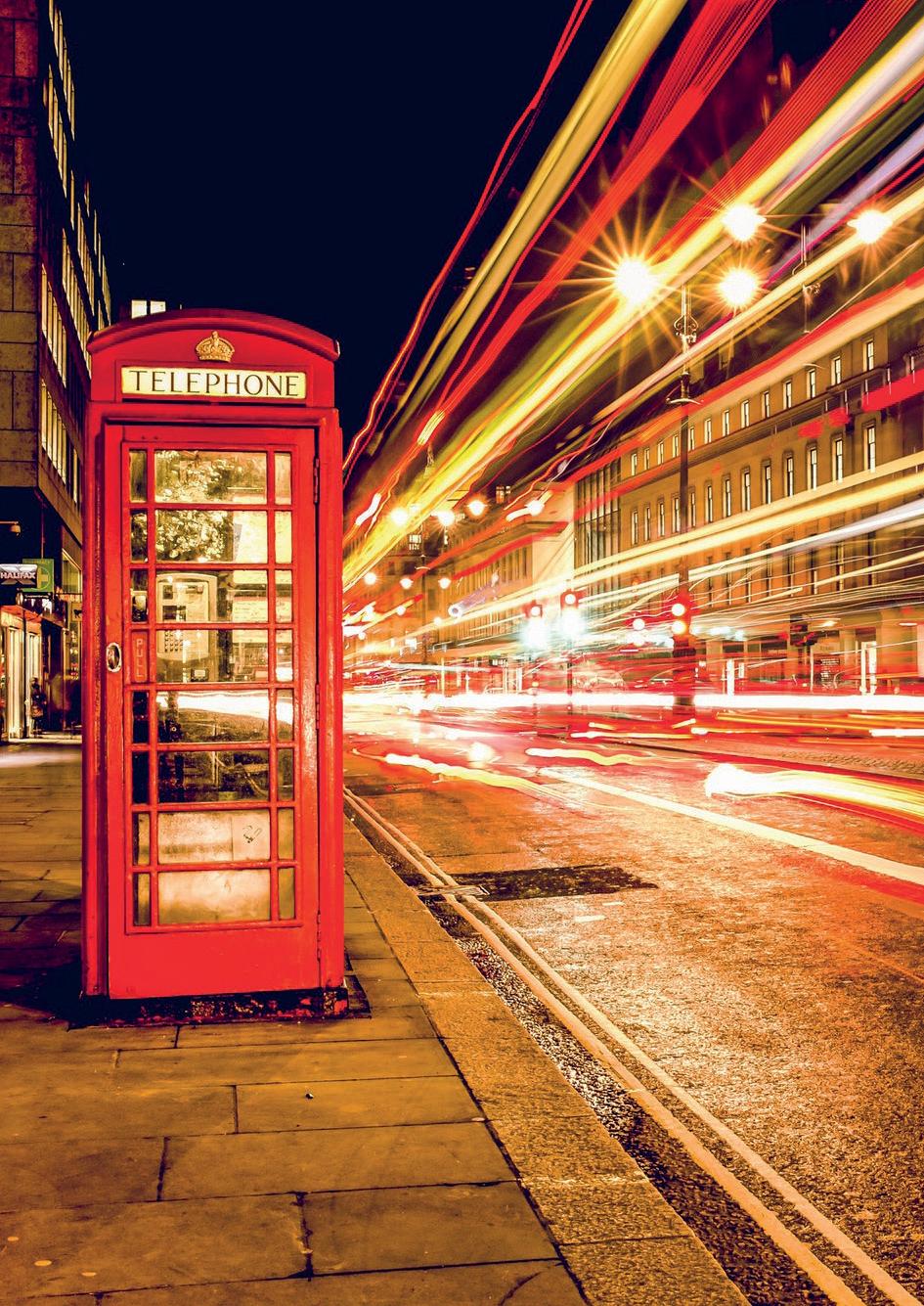
for communities and citizens. This certainly sparked some attempts to forge joint working across public services. Local authorities and police forces started to work better together and in some cases, for example in Blackburn with Darwen, even pooled resources and local managers. To a lesser extent this happened with the NHS.
Efforts were also made to reinforce relationships and plans with the third sector. The thrust, for a time, seemed to be for services to integrate and operate from the same shared locations and where possible with joined up leadership in the hope that this would drive service provision to be naturally better aligned and integrated as a result.
Today the emphasis appears to be firmly back onto giving local communities more say. Local Government and Communities have recently closed their Total Place webpage and redirect you to ‘Whole place community budgets’. Rather than the focus being on locating services together or managerially reorganising services to try and trigger joint working the focus has flipped and is very much on identifying specific outcomes for people and re-engineering processes involving multi-service providers to provide these better outcomes more effectively. The message is clearly to identify processes and services that can be held up as ‘wins’ and use these as a catalyst for further change with wider integration a product of this further down the line. There have been some very successful pilot schemes delivering improved services in Manchester, Essex, London and West Cheshire.
So has it been a confusing decade? Government says that the ‘thing’ is a phased and evolving strategy and each of the above focuses has its place in the journey.
However on reading my own last few paragraphs summarising the last 13 years I cannot help immediately thinking that something doesn’t quite make sense. I have tried to work out whether it is my own muddled thinking and interpretation of events or the muddled policies of Government over this period which is creating confusion.
Well given that I am not the only one….let me take the brave step and blame Government policy or at least the communication of it.
The way I see it the policies, thrust, advice and focus have been trying to achieve the same critical results over the years;
•Public services must work better together;

•The emphasis must be on outcomes for citizens;
•People should have more say in what they want and need;
•BUT I would argue that because these have been so hard to deliver there have been subtle changes to the way that is thought the best way to achieve them.
In the beginning it was about organising delivery to the most local levels so that this might force better integration and working with other local services and give people more say.
Then there was a move to locate services together and integrate management teams in the hope that this might speed up and force services to come up with joined up solutions
Now we have a more subtle approach of giving local communities budgets in the hope that they will use funding in the most effective way and drive changes in the way services are delivered. Alongside this joint working teams (pilots) have been set up to look at improving specific outcomes and developing new processes to make it happen.
Throughout each of these approaches some local authorities who have naturally taken a lead role in areas have taken the decision to ‘stick’ to just developing joined up access arrangements in central locations across multi-services (joined up front line customer operations) and to put the actual delivery of these services in a more integrated manner on the back burner, perhaps because it is all too difficult. Arguably these local authorities have been the most successful at developing the public perception that public services are working well together.
To be fair there has been a lot of messing about around the edges since 2001. Yes
The Executive Magazine | 21 Public Sector
there have been some local successes. Some of the Government funded pilots have developed innovative multi service processes which have improved outcomes. Some local communities have worked to develop their own management teams and have begun to secure funding to deliver services.
But something tells me it’s not happening in a big enough way to make a real multi billion pound difference. Why is this? Because it is hard stuff.
We still have managers who are protective of their empires and don’t want to give it up, not least because of their own job security.
A necessary ingredient for much of what needs to happen is joined up IT in terms of databases, CRM systems etc. However many organisations invested so much in the noughties on new systems in their own silo’s that it is now just too painful and too expensive to redesign it. Catch 22.
At the end of the day Government is more complex than Marks & Spencers. There are many tiers, agencies, functions which have been operating separatley for years.
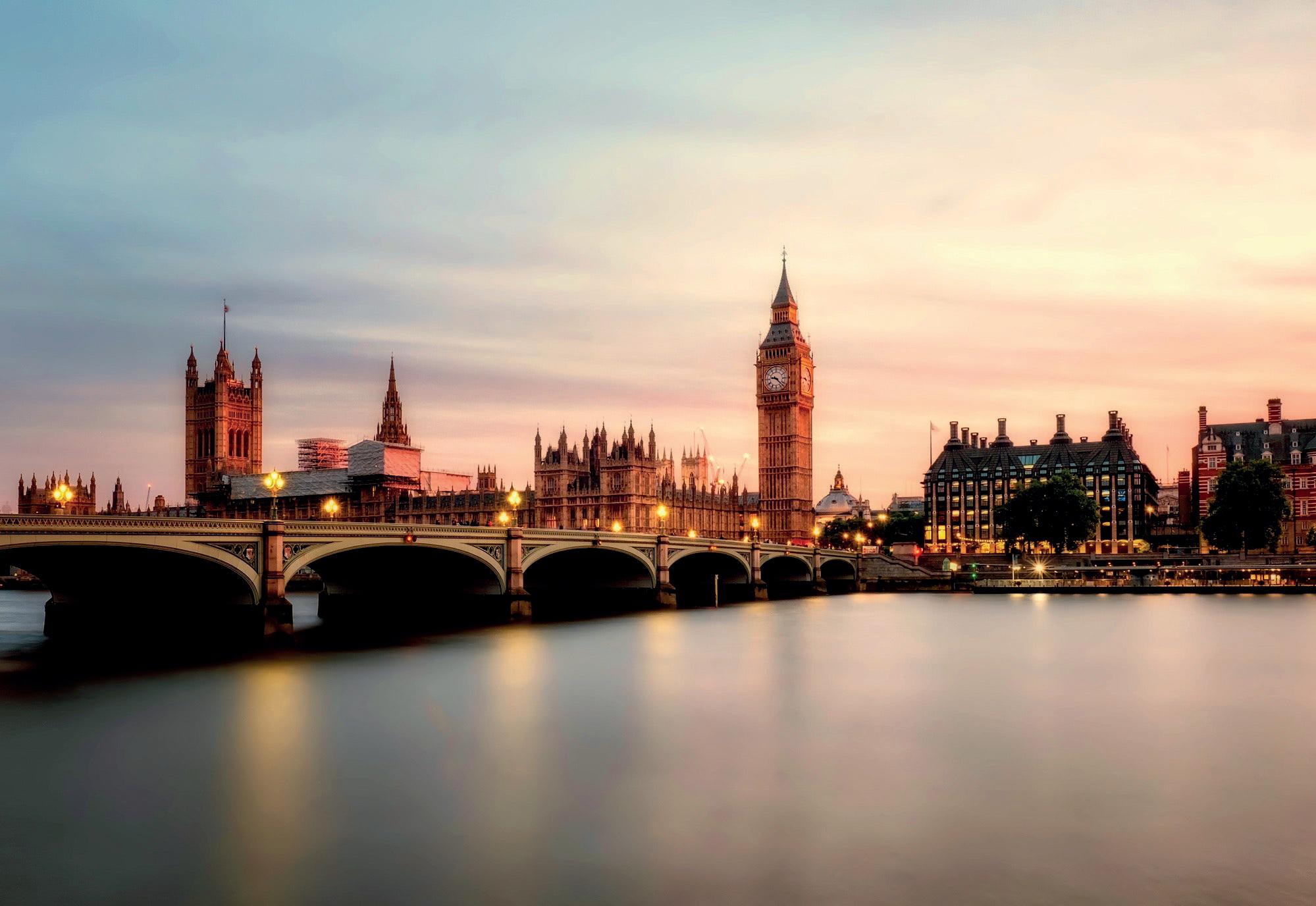
Local government, in particular, has a fixation with pilots, working groups and joint committees. Consult, consult, consult. It does not work. There are too many issues with sovereignty across public services and therefore a need for inclusive but independent leadership.
But the main stumbling block at the moment is the need to find the investment and the vision to develop and deliver a meaningful long term plan across multi-services at the same time that public services are under pressure to deliver hard revenue savings, quickly. This means little investment and little leadership capacity available to focus on the big picture.
I firmly believe that to be successful the public sector will have to bite the bullet and follow some robust guidelines to develop a programme which will need funding in the short term. Yes there are clearly examples of success where these guidelines appear not to have been followed but I argue that the successes are small fry compared to what could be achieved. As a starter for ten there must be;
•Significant investment in IT and resources to deliver joined up public services. Have a long term vision;
•Powerful ‘independent’ leadership across all services is a necessity;
•Bold decisions and risks will need to be taken which may result in things going wrong;
•Services must be carefully branded as multi-agency no one service should be allowed to take a lead role. It doesn’t work;
• Make best use of political leadership….it often transcends boundaries;
•Develop the third sector. This is the main hope
Don’t reinvent the wheel. Learn quickly from the catalogue of successful initiatives across the country to act as a catalyst for buy-in and momentum. I bet many areas will start again…..why do many local authorities believe that they are different from the norm?
However I fear, ironically, that the current significant funding crisis will prevent this massive opportunity from properly getting off the ground. This leads me to the conclusion that all of this should have been done in the affluent noughties.
Have we now missed the boat? I conclude that indeed the boat has left but it’s still possible to make a leap for it and secure the future but services will need to be bold and jump quickly together.
22 | The Executive Magazine Public Sector

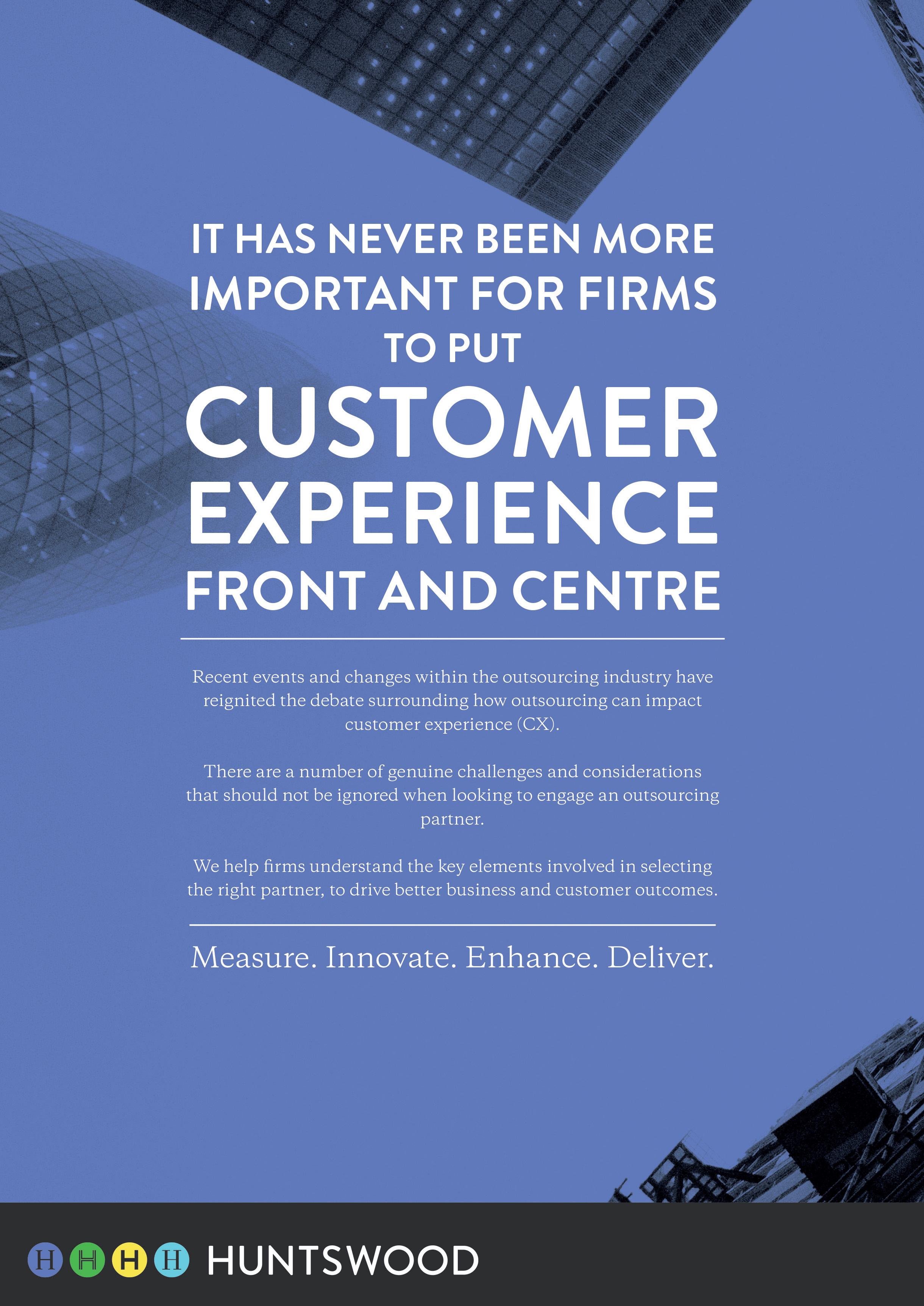


Cyber Security
A
Mistake
Leave
Security Cyber Lisa Forte, partner at Red Goat Cyber Security LLP, explains why it’s important to include all professionals in cyber security training – from the cleaner to the CEO.
Why It’s
Dangerous
To
Cyber Security Just To The Professionals
IIn my time at one of the UK Police Cyber Crime Units, I saw many cases which highlighted the fact that cyber security isn’t just down to the CISO or IT department but needs to be taken seriously by the whole executive team and every member of staff they employ. Not convinced? Consider this real-life case:
Julie worked for a medium-sized business operating in the UK and Ireland. She was the PA to the CEO, Mike. On the day in question, Mike was enjoying his skiing holiday in Italy with his wife and kids. It was Friday afternoon and Julie received an email which read:
“Hi Julie, I am just emailing to check that you have transferred the £70,000 into bank account XXX-XXX-XXX in order for us to buy that company I told you about in Belarus. The money has to clear in their bank account today otherwise we will lose it. Mike”
Julie transferred the money and went off to enjoy her weekend. When Mike returned from his holiday Julie asked whether everything had gone through with the purchase of that company in Belarus. We can all imagine what Mike’s face looked like when he realised what had happened.
This type of attack, known as social engineering, is becoming more common. Emails can contain malware or can ask staff to transfer money or input login credentials. As technical controls get better, you are more likely to be attacked in this way.
What can we learn from this case? Firstly, Julie was used to Mike making last-minute requests that she had heard nothing about before. There was no formal procedure to follow. Mike, being the CEO, should make sure that his staff are aware of the risks of emails like this. Julie should have been required to verify that the request was genuine by another means other than replying to the email. Further, there was no four-eyes policy on payments. Mike had authorised his PA to unilaterally transfer large sums of money out of the company account without getting another person to approve it.
Due to the nature of social engineering – the fact that the hackers go after human weaknesses – security has to become everyone’s concern, from the cleaner to the CEO. Cultural change within an organisation has to come from the top and filter down. The prevalent idea that cyber security is the responsibility of the IT department has failed, and it is estimated to have cost the global economy $600bn last year.
The impact of a cyber-attack is wide-ranging and doesn’t just affect the IT team: it probably won’t be your head of IT calling all your clients to tell them all their data has been compromised or standing in front of a journalist explaining why security hadn’t been taken more seriously. The C-suite members will have to be involved then.
So how should executives get involved?
Table top exercising
One of the best ways of ensuring you are prepared for a cyberattack is to run a table-top exercise simulating an attack. Anyone who would be involved in strategic decision-making following a cyber-attack should be involved.

An exercise involving the incident response team together with senior management, HR, communications and, of course, the security team can test how well your plans work and how well you communicate with each other. It provides a really rapid way
to uncover planning errors and fundamental misunderstandings which can be remediated in the exercise rather than in real life. As well as preparing your company for a cyber-attack, bringing the executive team together for the exercise is an effective way to demonstrate to C-suite heads how a cyber incident affects the whole company and isn’t just the CISO’s problem.
Training
Invest in some good-quality face-to-face training for your staff against social engineering and cyber-attacks.
The company executives should take part in this too. This demonstrates to employees that the entire company takes security seriously and provides a defence against the increasing frequency with which company executives are targeted by hackers.
Testing
When it comes to a cyber-attack, the sad reality is that it is a matter of when you get attacked, not if. Identify your technical and human vulnerabilities by conducting phishing and other forms of social engineering tests. Remember to include all your staff. Again, this not only helps lead by example but also acknowledges that executives aren’t necessarily experts in this field and that they too need training.
The security culture within an organisation needs to improve to really defend the company, and the IT team needs staff and executives to assist them in this by being trained to detect potential threats and report them.
Developing a security culture
The case described earlier of Mike and the apparent purchase of a company in Belarus describes a type of attack known as CEO fraud. CEO fraud is an excellent example of the need for a topdown culture for cyber security.
Typically, the attacker leverages status and urgency in order to get the victim to act quickly, and where necessary to violate existing security protocols. Have you ever asked a member of staff to bypass protocol to get something done quickly? In the vast majority of cases, staff do as instructed and are very unlikely to challenge the authority of a senior manager, even if this involves bending or breaking rules. Management sets the standards of behaviour; if you want to empower your staff to “just doublecheck” before giving out potentially valuable information or to challenge people without badges, they need to feel authorised and encouraged to do so.
Here are some ways executives can improve this situation:
•Talk up the security protocols in meetings and emails
•Visibly take part in staff training on security
•Have a positive attitude towards cyber security and show your active involvement in compliance
•Reward staff members who meet these standards both with public recognition and material benefits
•Endorse and participate in competitions which highlight the cyber security issues the company is focusing on. These can be really successful!
•Create cyber security ambassadors for your departments or teams. Meet with them periodically to hear about the problems and challenges they are encountering
•Send round real-world intelligence on cyber-attacks and the consequences for the victim companies.
The Executive Magazine | 27 Cyber Security
Think You’re Ready For GDPR? Here’s A Popular Digital Policy That Could Be Putting Your Business At Risk...
With the General Data Protection Regulation (GDPR) in full effect, The Executive Magazine explores a cyber security risk that hasn’t been given enough attention in the press –despite its strong links to an increasingly popular policy in the digital world.
Unless you’ve been completely off the radar in recent months –and have no contact whatsoever with your company’s IT and marketing department – you will have certainly heard of the GDPR which, after much anticipation, is now fully implemented.
But are companies truly prepared for what will no doubt be a seismic shift in the way we manage data and safeguard the cyber resilience of our corporate technology?
With the new law in full swing in the UK, new research has uncovered a staggering find: there is considerable correlation between ‘bring your own device’ (BYOD) schemes and a higher cyber security risk in small businesses.
Six in 10 SMEs – from a sample of over 500 business owners –reported having experienced a cyber security incident since rolling out a BYOD policy, with this figure ballooning to almost 95% when considering organisations of up to 250 staff.
In a nutshell, BYOD schemes mean employees also use personal devices such as laptops, tablets and smartphones for work rather than just their general day-to-day activities. Many companies vouch for it due to its alleged productivity and cost savings, and the policy has been making significant inroads in the business world in the UK and beyond.
While research is divided, some firms claim BYOD helps staff feel more productive, increases morale, and is generally more convenient – as well as making the organisation look like a more flexible and attractive employer. However, while allowing employees to work anywhere, at any time, can be commercially beneficial, it brings about considerable risk when it comes to security.
The recent research, from merchant services provider Paymentsense, revealed that these schemes are prevalent across small businesses, with larger SMEs being more likely to roll them
out. While for microbusinesses the rate of adoption stands at 40%, businesses of up to 100 people reported a rate of 51%, while those of up to 250 claimed almost 70% of staff bring their own devices.
Of particular concern was the correlation between this boom in popularity and cyber security: as BYOD becomes more prevalent, so do cyber-attacks. Just one in seven (14%) microbusinesses reported a cyber security incident since rolling out BYOD, while those of up to 500 employees recorded a 70% rate – which then rose to a whopping 94% across companies of up to 250 staff.
The most common incident was malware, which affected twothirds of SMEs. Next were viruses, distributed denial of service, data theft and phishing.
“Although our study shows the popularity of BYOD amongst small businesses, it’s alarming to see so many reporting incidents since implementing these schemes,” said Chafic Badr, head of digital at Paymentsense.
“As with all cyber security issues, the biggest factor is the human one – employees need to be aware of their responsibilities and the risks associated with a BYOD system. This is particularly important when you consider personal data responsibilities in the post-GDPR landscape.
“Business owners should create concise guidelines to help staff use best security practices in their daily activities – both within the office and outside. It’s also worth remembering that when mobile device users are away from work, susceptibility to threats such as phishing tends to increase.”
To make sure your company is ready for the big regulation changes, visit the Information Commissioner’s Office website for extensive guidance.

28 | The Executive Magazine Cyber Security

Range THE NEW Rover SVCOUPE
Land Rover has announced the release of the The Range Rover SV Coupe –the most powerful SUV Jaguar it has ever made. The Executive Magazine gets the inside story from Special Vehicle Operations (SVO).
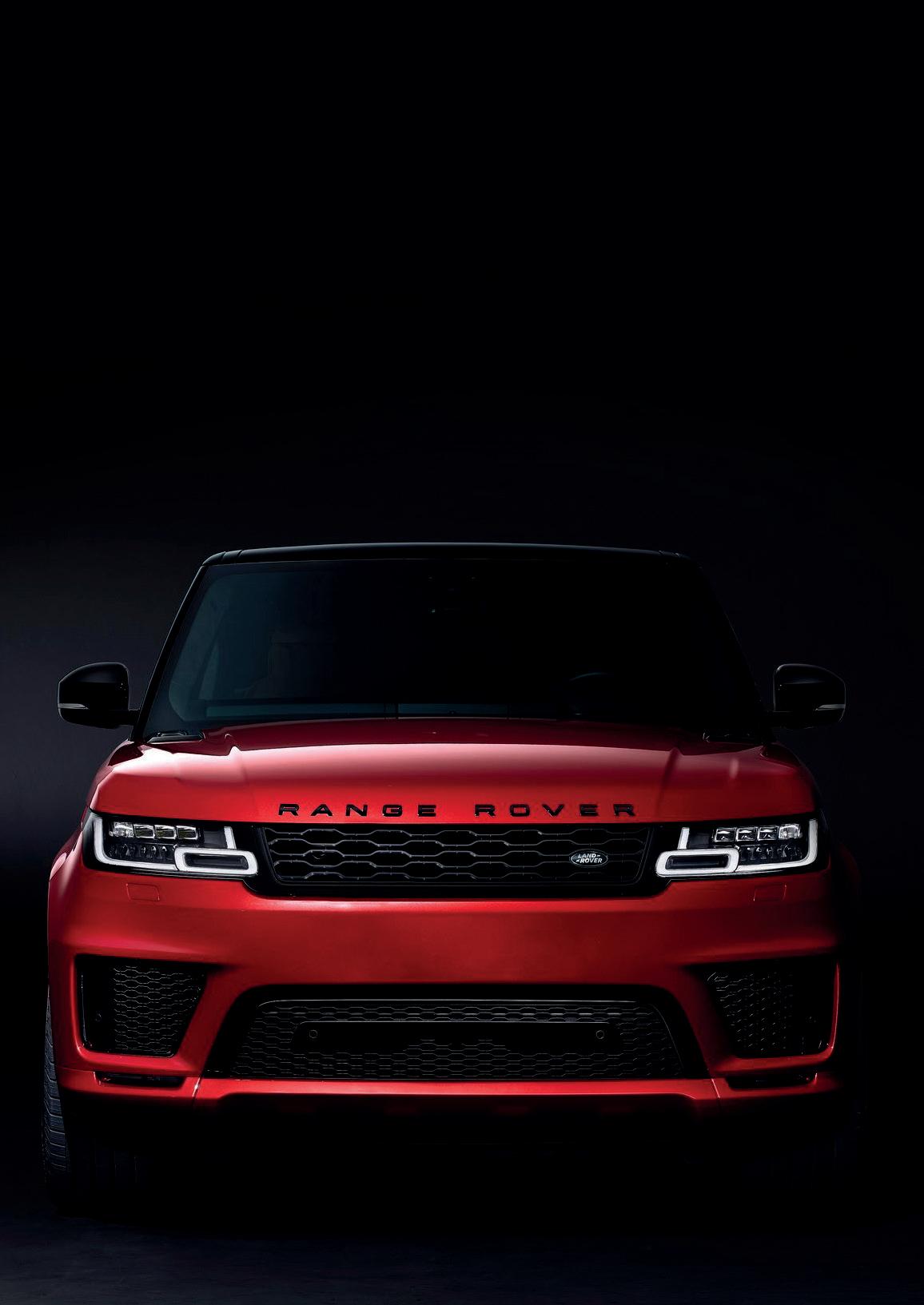
WWith a limited production run of just 999 units, the SV coupe will be ultra exclusive, and reserved for the Range Rover elite. With just two doors – paying homage to the original 1970’s range rover – the coupe will be both sporty and luxurious. The Coupe is something of a heritage statement for Land Rover, but SVO have remixed the elements in a way that makes it relevant to today. The Coupe clearly alludes to a sporting prowess, but it also has a formality.

Carrying the prestigious SV badge – Land Rovers SVO division – means each car is treated to a completed overhaul, from the body work to the engine and even the interior, resulting in a truly unique piece of engineering. Subtlety is key, so no garish paint jobs or over-the-top body kits found here, thus gaining maximum appeal to the executive, more mature audience.
The ethos behind this project for the SVO division was no silliness, meaning no outlandish body flares or over the top arches . This isn’t a car for kids. The SV Coupe is about amplifying the core values of the business, and SVO want to create cars of great distinction.
In order to attain the title of the fastest Range Rover


The Executive Magazine | 31 Motoring
ever built, a five-litre v8 supercharged power plant has been tuned to produce a staggering 550bhp – which, as far as we’re concerned, is supercar territory – and can reach speeds of 165 miles per hour, hitting 60mph in sub-5 seconds.
Prices for this exclusive limited production run start at £240,000, but it doesn’t stop there. The customisation options are practically limitless, meaning each vehicle can be tailored to match each buyers’ requirements, from custom paint jobs to luxurious quilted Napa leather seating and bespoke entertainment systems.



Personalisation is part of the proposition. With a roster of clients already signed up for the pre-production models, they have committed an average of an extra £100,000 for modifications and customisation. SVO have a team of experts on hand to help guide you through the process of creating something truly unique, from helping you pick through the 100+ colour options to a ‘duo-tone’ interior, embroidery, door-handle and tread-plate engraving, as well as badging made of semi-precious metals and much more. As part of the experience, each customer is treated to lunch by a Michelin-starred chef whilst discussing the options.
Rather than just being a chopped-down Range Rover Sport, the Coupe is a completely new car; the only original parts are the bonnet and lower tailgate. Everything else is either brand-new or re-engineered, with a whole host of exciting additions like artisancrafted handmade badges, a bespoke two-part grille, intense headlight beams, and a lower stance for a sportier look and feel. The interior gets the same treatment, from 20 way adjustable seating to a bespoke audio system from Meridian.
With a limited production run, you’ll need to be quick – that is, if it’s not too late already.
32 | The Executive Magazine Motoring
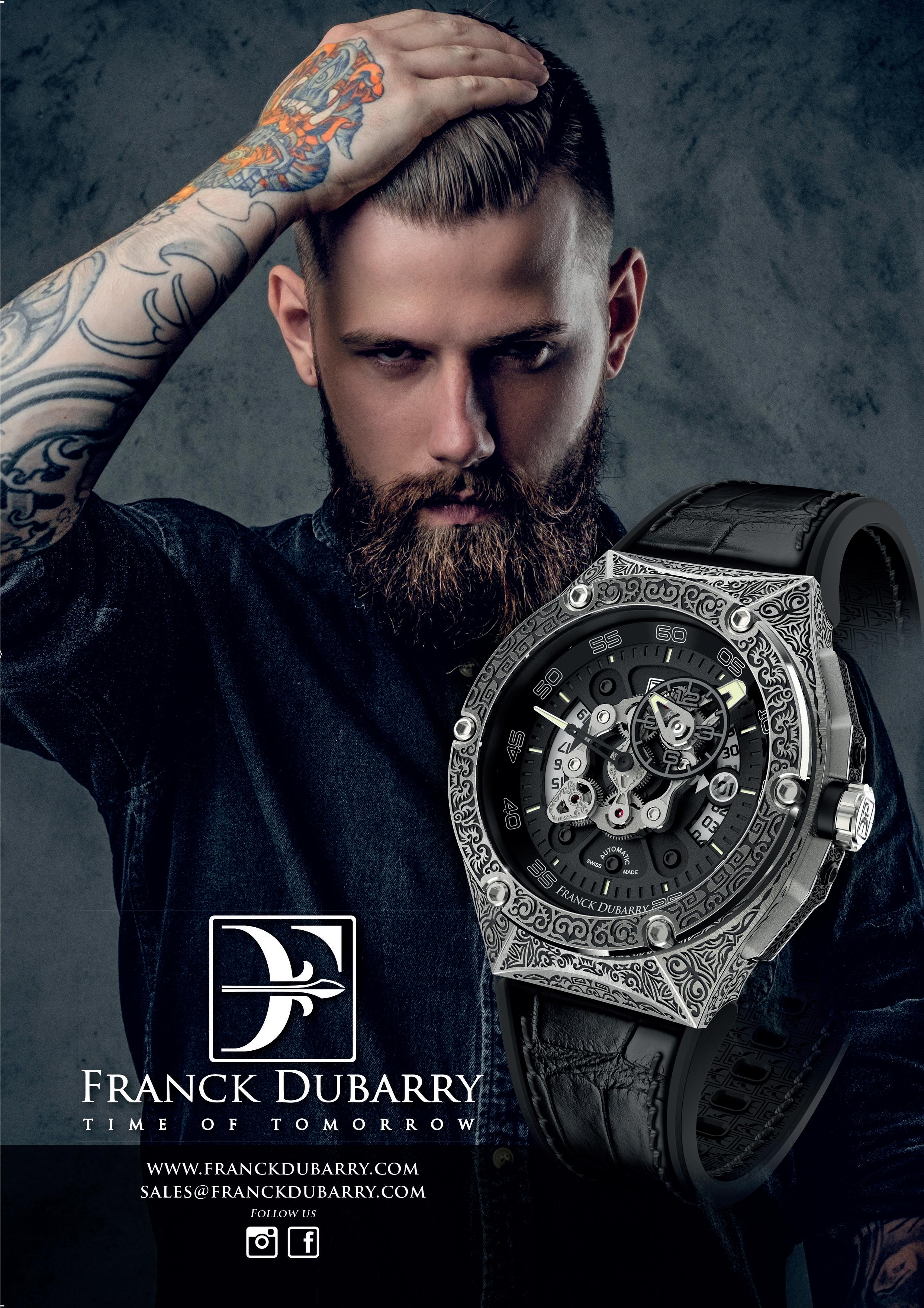

34 | The Executive Magazine Motoring
Revealed
The All-New Rolls-Royce Cullinan Suv
The Executive Magazine takes a look at the brand-new SUV offering from Rolls-Royce: the luxury four-wheel drive Cullinan, due for release soon.
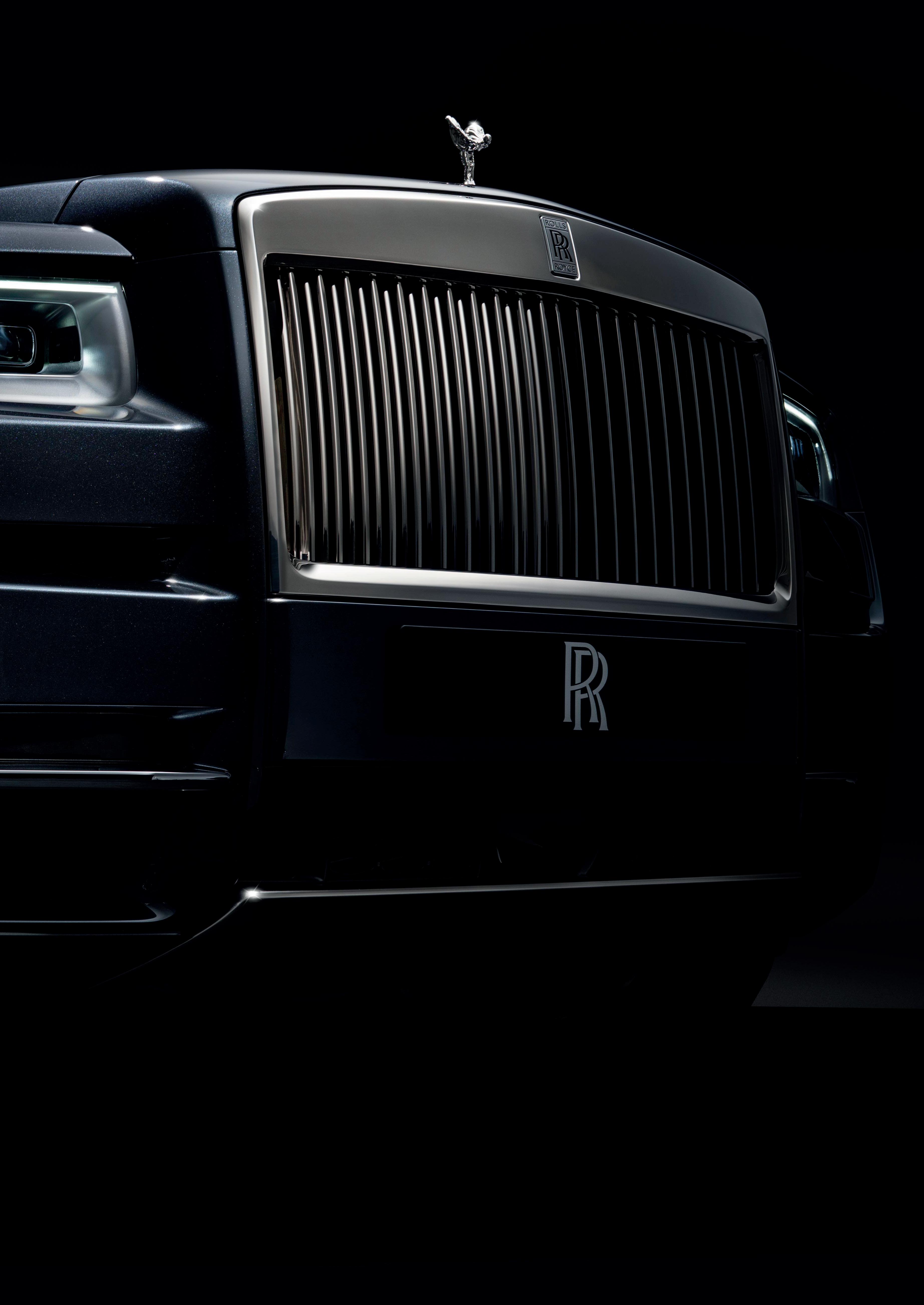
Motoring
Motoring
With rumours circulating as far back as 2015 about a luxury SUV from Rolls-Royce, we can finally reveal that production has been confirmed for early next year.
This family-orientated addition to the Rolls-Royce fleet is a first for the iconic British brand, featuring four-wheel drive, a raised driving profile, active tailgate and a whole host of new design features. It will be pitched up against the Bentley Bentayga and the more extreme Lamborghini Urus when released to the public in 2019.
In true Rolls-Royce style, a mantra of ‘effortless, everywhere’ has been adopted to play on the SUV’s all-terrain capabilities, which is engineered to provide an easy and enjoyable experience for the driver – something that any Rolls owner would come to expect.
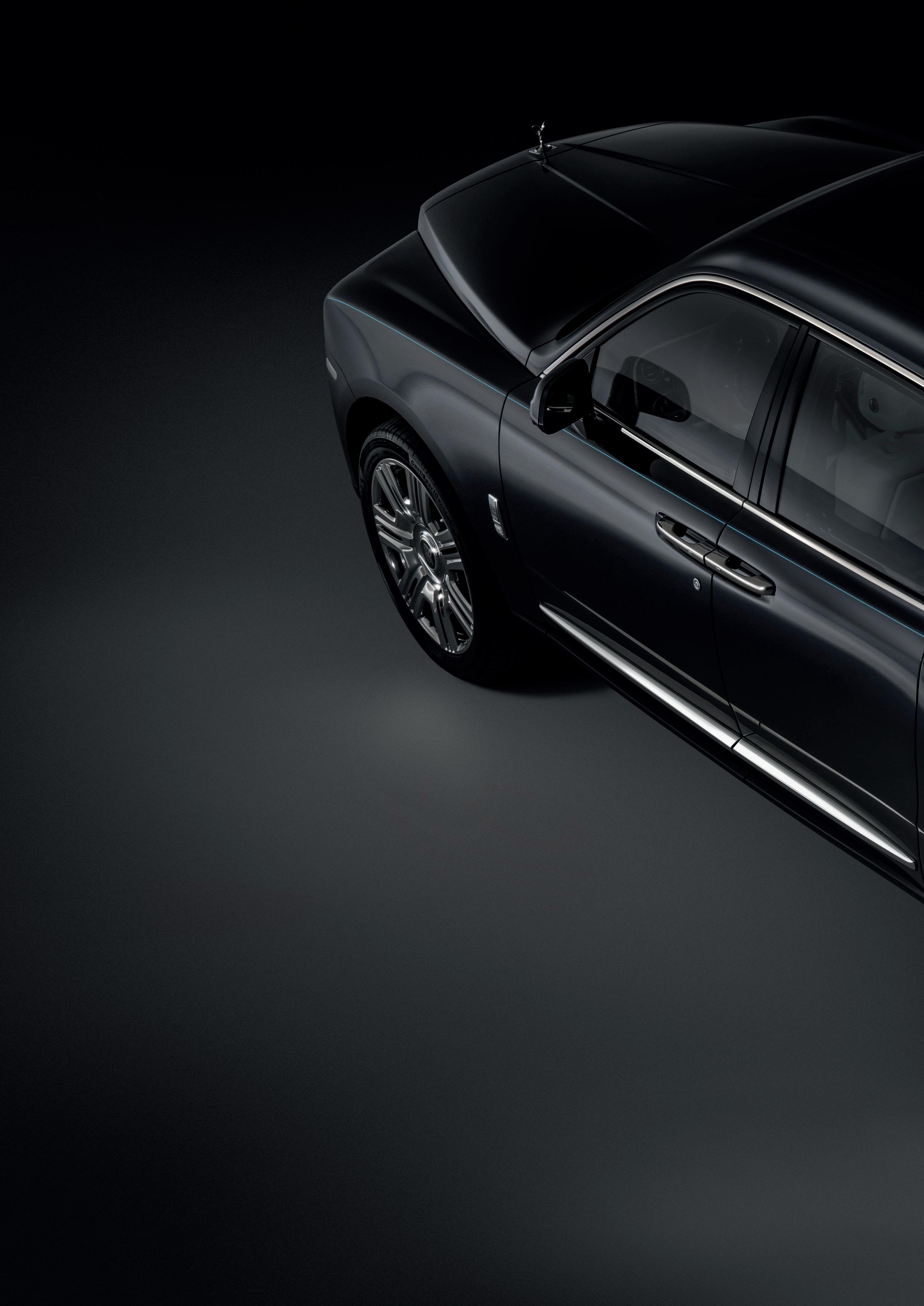
Styling
When we got to see the Cullinan in the flesh for the first time, the most immediately surprising aspect was its size: it’s actually smaller that we were expecting. Only very slightly longer and wider than the Ghost by a few millimetres, and sitting 80mm lower than the Range Rover Vogue LWB, the Cullinan makes up for its diminutive shell with its striking bodywork. It’s bold, shapely and has a strong road presence, resulting from five years of design work, where meticulous and painstaking tweaks and changes were made in order to get the aesthetics just right.
The team was headed up by design chief Giles Taylor (who has since departed from the company), who had a bold vision for the Cullinan from the very beginning. The emphasis was placed on strong lines, big features and bulging bodywork. The functional aesthetics like the oversized grille and tougher-looking headlights are unapologetically big and brash. The heavy styling magnifies the capabilities of this strong yet luxurious crossover.
Interior
The Rolls-Royce experience of late is a much more personal affair, and the customisation options are pretty much limitless. This is most obvious when owners select their interior options. There is a vast array of the world’s finest leathers, woods and metals to choose from, but if the standard options still aren’t to your liking, a design consultant can help you create your dream interior space.
Passengers are taken care of with a myriad of entertainment in the back, which again can be refined to suit individual needs. Access to the rear seats is gained via typical Rolls-Royce rear-hinged coach doors, opening in a ‘suicide’ fashion and giving a fantastic view of the interior when both doors are opened. A nice touch is the way the doors sit over the body skirts, which prevents the driver and passengers from getting dirty when getting in and out of the vehicle.

The Executive Magazine | 37 Motoring
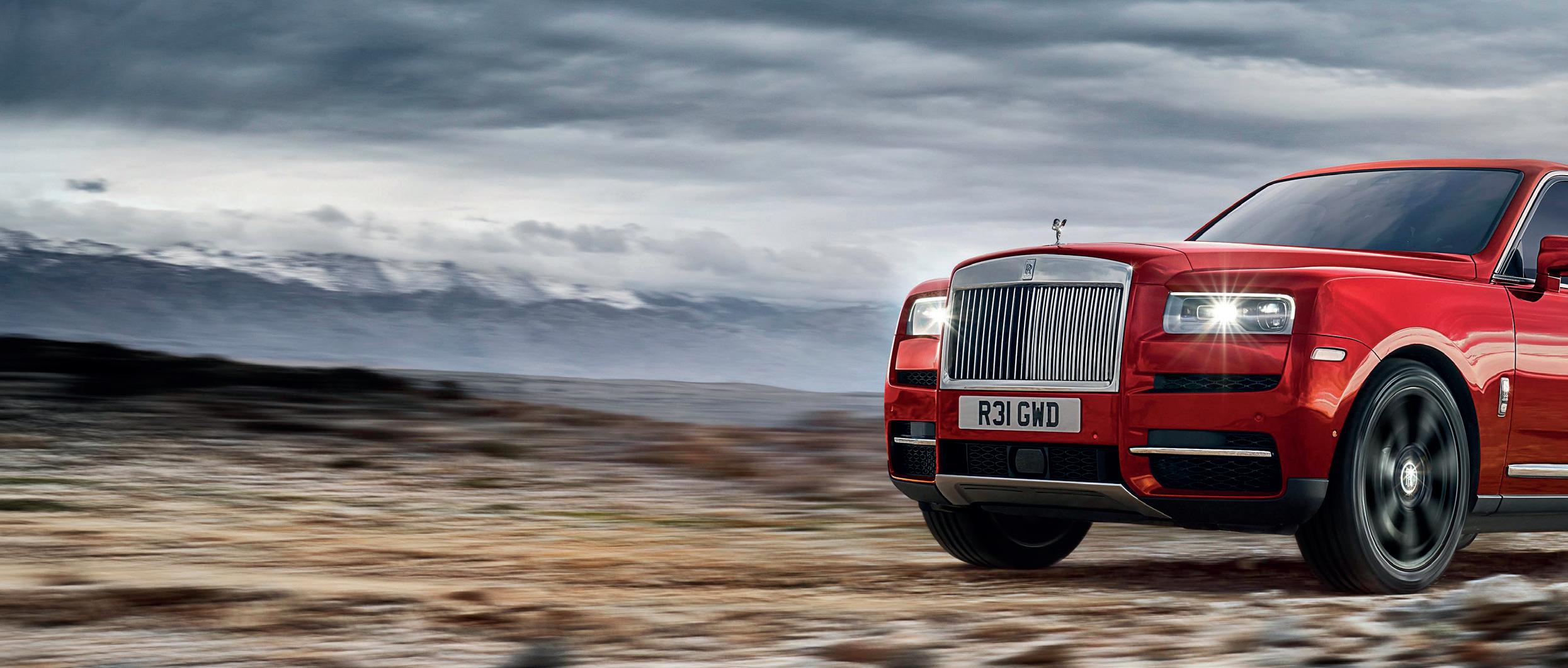




38 | The Executive Magazine Motoring
The seating array can be customised to suit any Cullinan owner’s requirements, from a folding three-seater bench to fixed sumptuous chairs. You can even opt for a hidden seating platform which pulls out to hang over the tailgate to create a viewing platform. In any configuration the rear seats offer a ‘Pavillion’ view forward, being slightly higher.
The Cullinan takes somewhat of a new direction when it comes to defining its buyers’ profile. Rolls-Royce has made a huge effort to make this much more of a driver’s car; gone are the days of being wafted around by a chauffeur – enter the new generation of Rolls owners. This is most prevalent in the driver’s seat, where you’re presented with a hugely functional dashboard layout and an array of driver aids such as night vision with pedestrian and wildlife detection, adaptive cruise control, and lane departure warning systems.
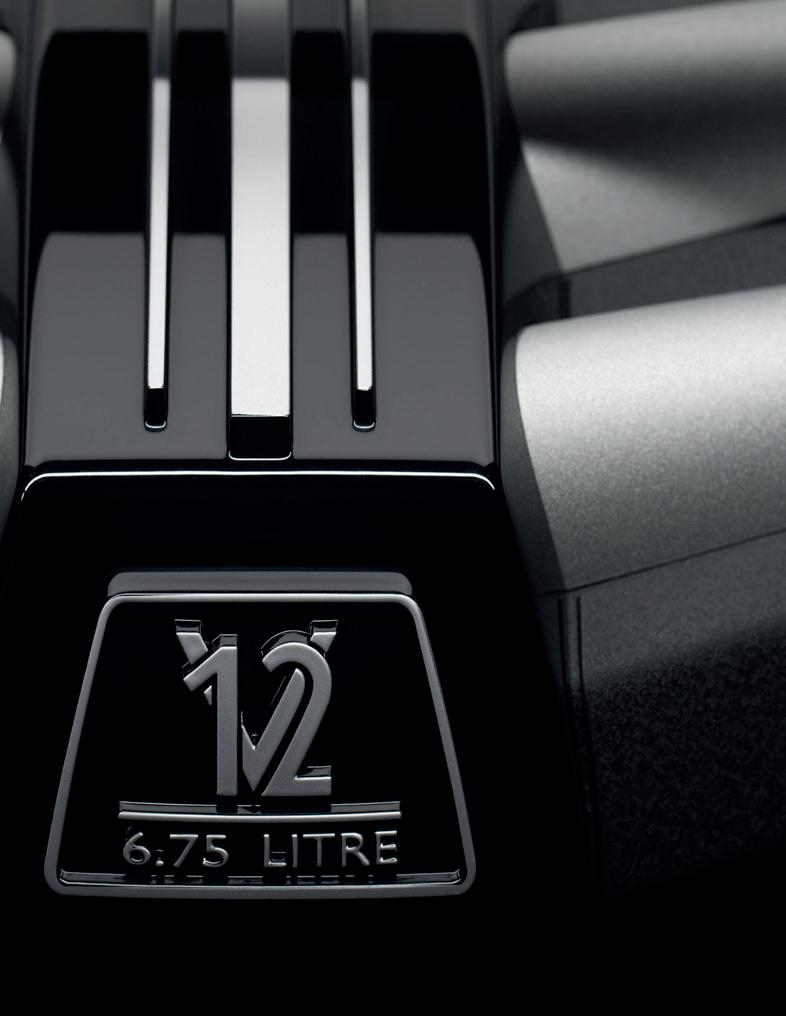
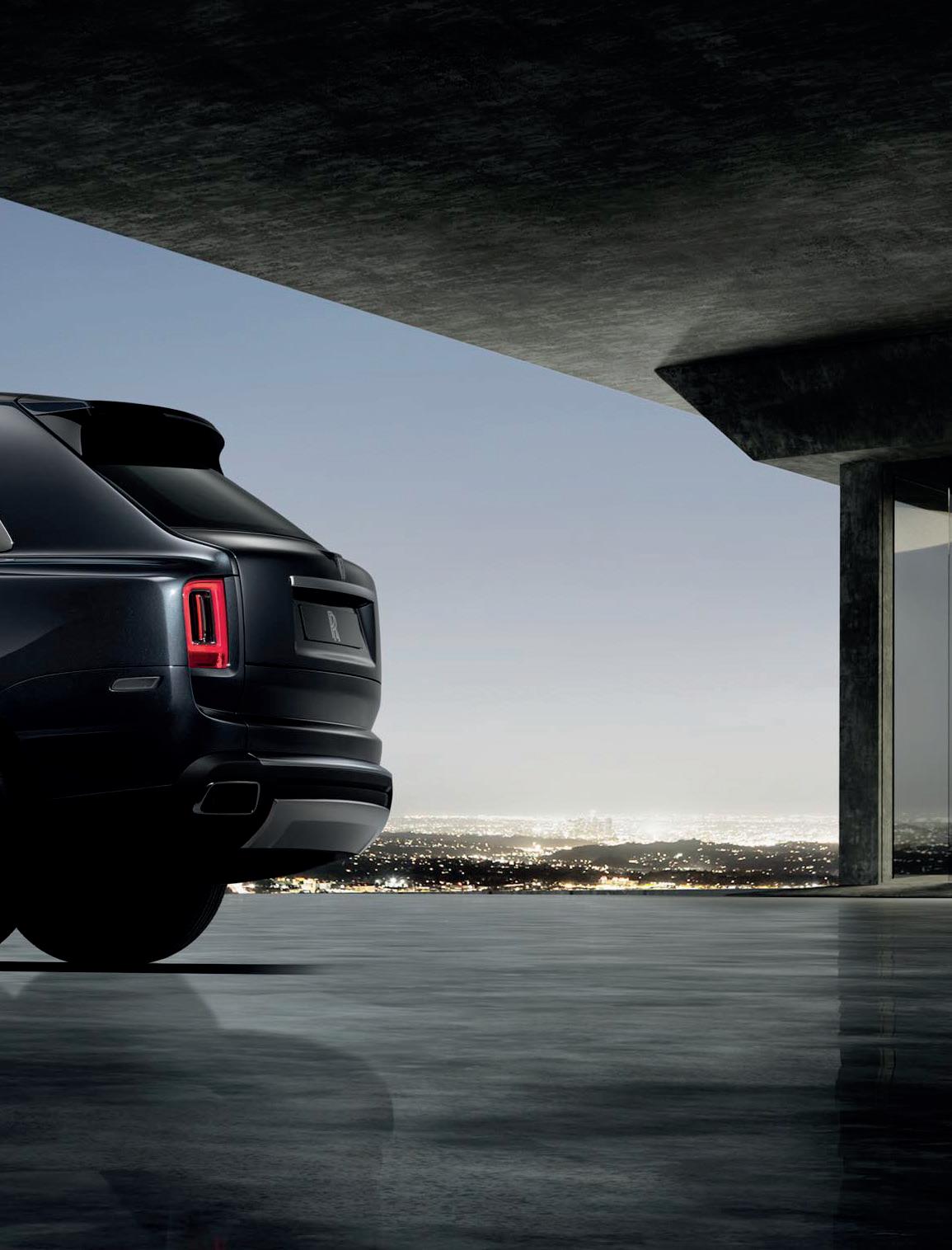
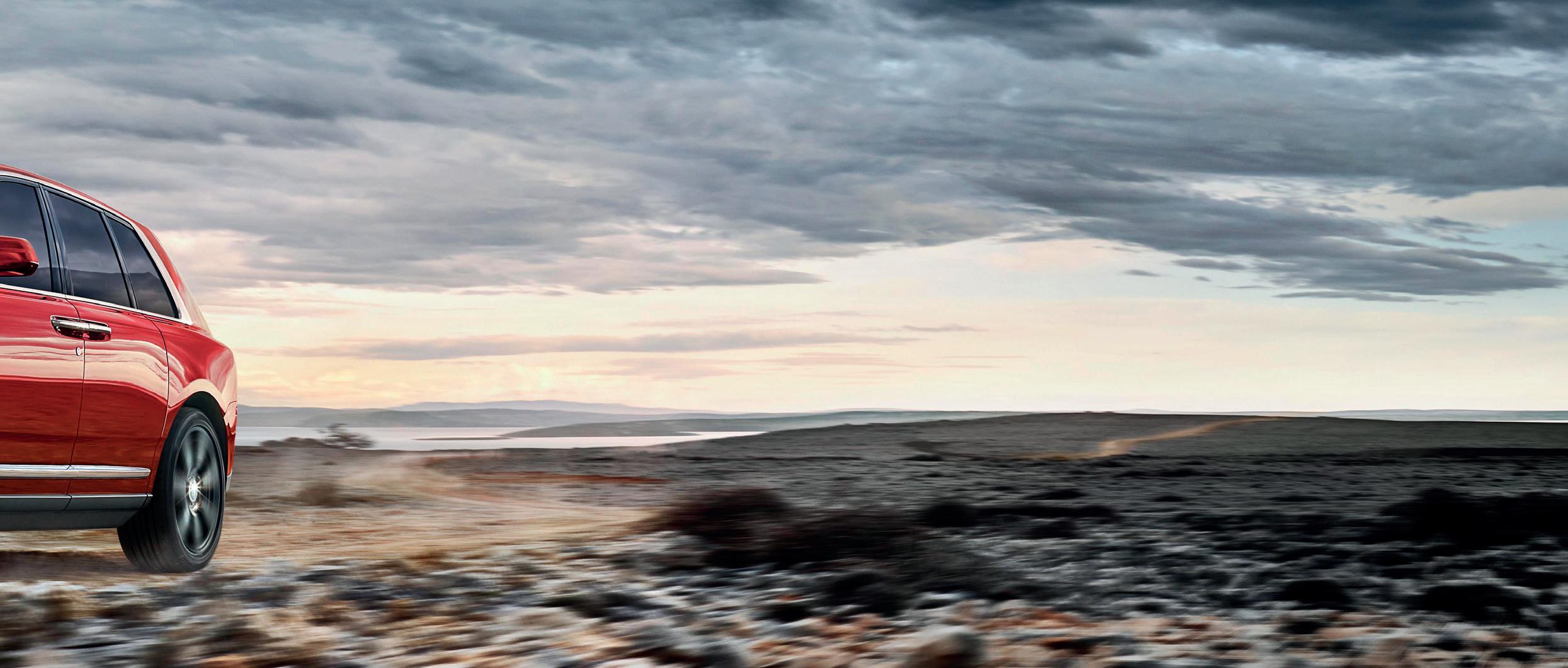
An adapted version of BMW’s highly acclaimed iDrive infotainment system controls the vehicle settings, in-car entertainment, sat-nav and driver aids, all from an intuitive and simple-to-use interface that doesn’t distract the driver.
Other gadgets include the ‘Everywhere’ button, which adjusts a multitude of different settings to soften the suspension even further to make light work of those pesky potholes and rugged terrain. Some of the most futuristic tech that we’ve ever encountered in a car feature in the Cullinan, including a stereo camera in the windscreen which monitors the road surface and adjusts the suspension accordingly, and a navigation system that can prepare the gearbox for the road ahead with its three-dimensional mapping.
Power
The Cullinan shares the exceptional 6.75-litre twin turbo V12 engine and all-aluminium chassis found in the flagship Phantom model. The power plant has been slightly de-tuned to maximise the comfort and smoothness, rather than pure power – but delivering 850Nm of torque from 1,600rpm with 563bhp still makes it a fast and formidable beast. The top speed is limited to 155mph, and the official 0-60mph figures haven’t been released yet.
The huge engine and bulging bodywork sits on top of the unique chassis, which features a super smooth double-wishbone front axle and five-link rear axle setup with air suspension struts. The air capacity has been increased to deal with the roughest of terrain and to allow the heavy SUV to glide over all manner of surfaces. The air suspension system also drops the car by 40mm to allow easy access. The four-wheel drive system is complemented by an all-new four-wheel steering system, promising to hug the road and make light work of any twisting track or off-road path.
Whether you like it or not, electric vehicles are the next big thing, and the architecture of the chassis has been designed and engineered with full electrification in mind – something we’re seeing more and more of in luxury car brands.
Want one?
If you’re lucky enough to get your name down for the early-release pre-order shortlist, you can expect to receive the most luxurious SUV on the market early next year. An official release date hasn’t yet been announced, but it will certainly be worth the wait.
The Executive Magazine | 39 Motoring

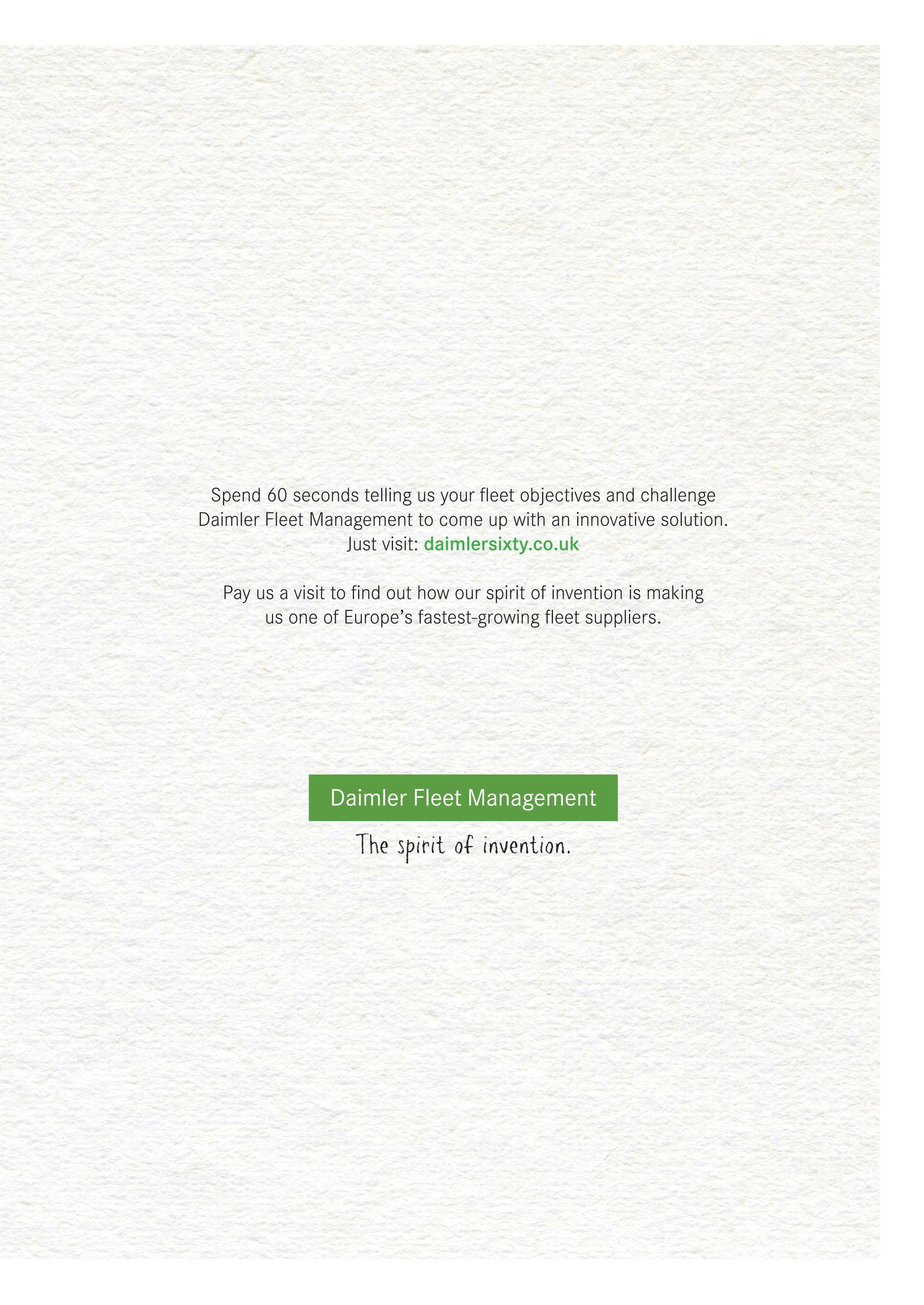
The Luxury Chauffeur And Concierge Market Is Alive And Well… And Thriving Style In Arrive
The Executive Magazine speaks with Abbass Zadeh, the 29 year old CEO of AZ Luxe, on how he built his impressive collection of luxury supercars and is taking the chauffeur and concierge industry by storm.
AAZ Luxe was formed in September 2017 by Abbass Zadeh at the impressive age of 28. Less than a year later the company is in profit and dominates the London and UK luxury hire, chauffeur and concierge market with a fleet of vehicles worth over £2.5 million and a host of international clients.
The company provides a concierge service like no other, offering the latest vehicles, the most sumptuous private jets and access to the best hotels, nightclubs and bars the capital has to offer. Whatever you need, day or night, AZ Luxe can provide it.
Founder Abbass Zadeh gained market knowledge working for a number of luxury brands before forming AZ Luxe, including Audi, BMW and Bentley, and has launched a chauffeur and hire service for renowned luxury dealer group H.R. Owen. Abbass steered the H.R. Owen luxury hire and chauffeur business from a groundup launch to a fleet of 35 vehicles and a year one revenue of over £1.2m. But he knew it could be done better, run without the constraints and slow reaction times that come with working for a large corporation, and it was as a direct result of this that AZ Luxe was formed.
Once more Abbass faced the challenge of starting a new business from scratch but now he could do it his way, only this time it was without the comfort of a corporate cheque book and sacrifices had to be made. The money made from a house sale enabled him to place a deposit on a Rolls-Royce Phantom, Lamborghini Huracan and two Mercedes-Benz S-Class’. He also rented a central London HQ, amassed a small team and AZ Luxe was born.
On day one Abbass started with an intelligent attitude towards social media and started to post engaging and relevant contact which saw his online reach swell to over 7000 followers. As a result of this social media engagement he gained bookings from a number of high-profile celebrities and saw his cars being featured in a number of music videos and on the feeds of many a celebrity.
In addition to social media Abbass strived to reach the corporate markets, attending conferences and conventions world-wide to promote the brand to global corporations. His persistence and determination won a number of corporate clients and enabled a partnership with a private jet company to form. His attitude of 24/7 availability is of huge importance to the corporate world, if a Global CEO lands with short notice at a UK airport AZ Luxe will have a car on the tarmac to greet them no matter how short the notice or what the time of day.
Hotels often find the cost of owning and running a luxury car to

42 | The Executive Magazine Motoring
shuttle VIP guests an unwelcome expense. Abbass took a new offer to hoteliers where he could provide the very best cars on a ‘there when you need them’ basis, meaning they could now afford to transport guests in the latest Rolls-Royce or MercedesBenz at a fraction of the cost of owning. As a result, several hotels are now contracted to AZ Luxe including the Hotel Café Royal, Jumeriah Carlton Tower and The Ned and many others use AZ Luxe on a regular basis for special clients.
While many luxury hire companies offer old models, or tired examples of once great cars, Abbass invested heavily in growing his fleet to ensure it met the exacting needs of a demanding client. From the latest Mercedes-Benz S-Class to a brand-new Lamborghini, Abbass used his experience and knowledge to buy only the very best.
AZ Luxe was also the first hire company in the UK to offer the Rolls-Royce Wraith for both chauffeur and hire and they are the only company to offer the Lamborghini Huracan Performante as a part of their fleet. Today the fleet is valued at over £2.5million and their unique, bespoke commission Rolls-Royce Phantom is the most in-demand car in London as has covered over 10,000 miles in just 10 months.
Adding a concierge service was a natural transition as many clients asked AZ Luxe for jet charter, hotel bookings, tables at
the best restaurants and entry to the most sought-after clubs. Using their extensive contacts client wishes were granted and the concierge service was added as part of the client experience. Now AZ Luxe always has a number of jets available within easy reach of Central London and relationships with the very best places to be across the U.K.
In less than 12 months AZ Luxe has gone from being an unknown entity to the leading chauffeur and hire business in the UK. The vison, dedication and market knowledge of founder Abbass Zadeh has seen his business thrive and the fleet grow from one Mercedes to a luxury £2.5million collection and that’s not including the private jets at his disposal.
Self-funded, self-motivated and selflessly dedicated, Abbass is a true young British entrepreneur. When asked what advice he would give, he tells us ‘Know your market, do your research, plan your desired direction and don’t let knock-backs or doubters make you question yourself’. He adds ‘The rewards of being your own boss are great, leading your team a responsibility. I’ve lost sleep, I’ve forfeited a social life, but we’ve created a world-leading business. Sleep can wait, we’ve new goals to achieve and don’t plan on resting on our laurels any time soon’.
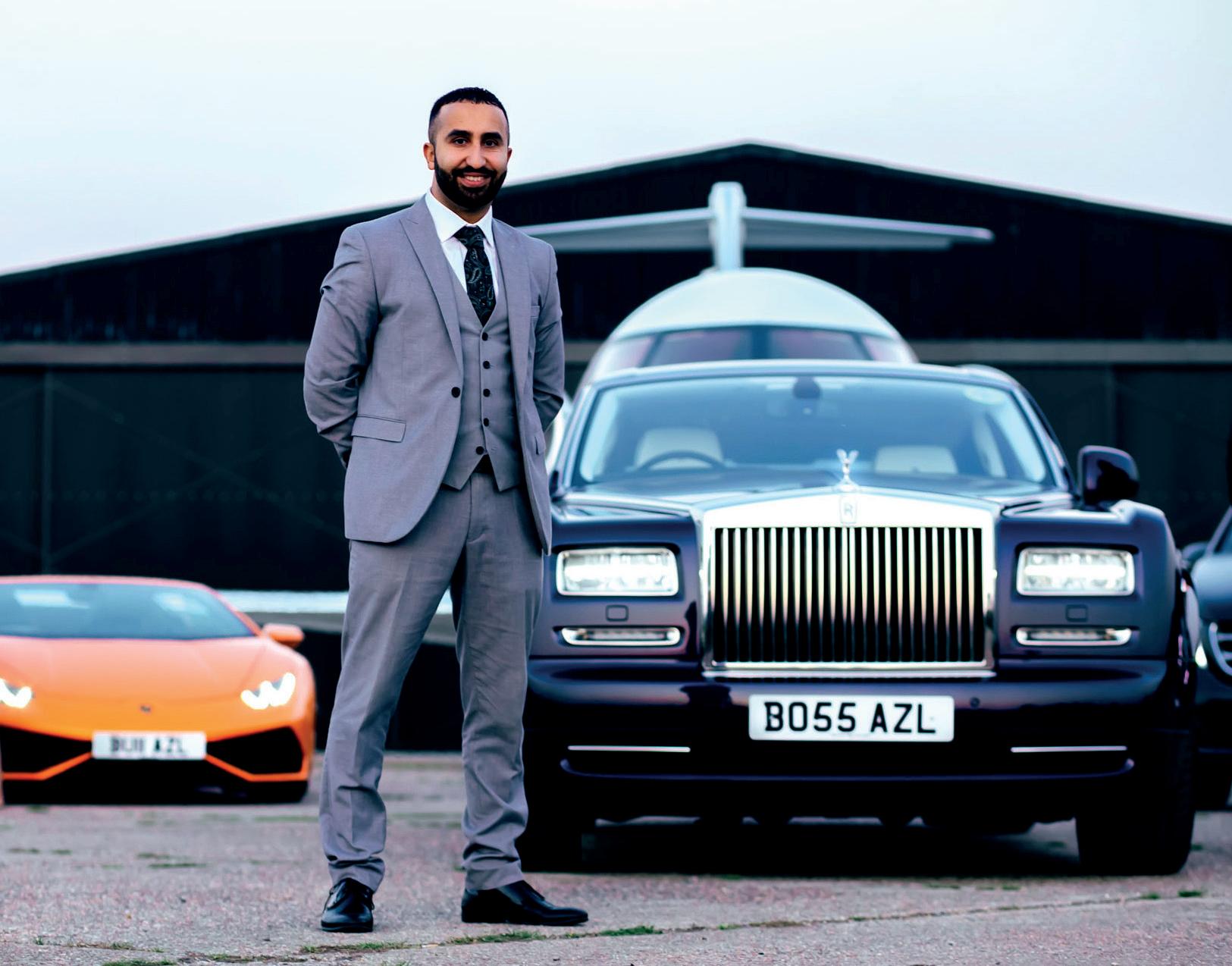
The Executive Magazine | 43 Motoring


Look Sharp
Natasha Edge, Personal Stylist & Colour Consultant based in Hampshire talks to The Executive Magazine on enhancing your personal brand through your clothing.
Fix Up Y
Your personal brand is so much more than just the clothing you wear. It’s the outward manifestation of who you are. It speaks volumes about your skills, work ethic, capability as a professional, background, but most of all, good personal branding says that you are confident in the person you are and that you like yourself. In other words, dressing appropriately equals confidence.
If you’ve read my previous blog posts, you’ll already know that the best way to communicate confidence without having to say it is of course with your actions and one of these actions is dressing well. I guarantee you that dressing well makes life a whole lot easier!
Get fitted with confidence
Improving your confidence by the way you dress will change everything you do. It can make the world of difference to your productivity, the way the world sees you and your prospects. Of course, personality and ability are second to none, but dressing well makes life that much easier.
Checking out various size guides for your body type online can be very useful. Being aware of fit goes a long way in terms of flattering your figure, creating shape and complimenting your body type. Too big pants or too short skirts can make you feel awkward, and you need to feel comfortable while going about your daily tasks. Clothes mirror the way you feel, so why not dress well and feel well too?
The good news is, you don’t have to measure yourself. Whether you’re long and slim, medium and curvy, or short and round, it’s easy to find the right fit.
What image best suits you?
Take some time while shopping to define your personal image. Of course, this all depends on what you want to communicate. Are you a lover of all things art and design? Are you a business
and finance professional? Are you a technology geek or a computer nerd? Each title has an image attached to it which doesn’t always have to apply to you, you can depart from the norm.
However, you can boost your image by considering what your daily outfits and you’ll definitely be a good portion of the way there to communicating clearly who you are and what you’re about. You’ll notice the difference in the way things flow with ease around you, you’ll be more confident and people will take you more seriously.
Your personal colour palette
Think about the colours you wear in the same way a celebrity would. Think about which colours make your skin glow or your eyes pop. Each colour has a different interaction with your skin tone, eye and hair colour. Colours can make you look fresh and lively or warm and cosy. Or they can make you look sick!
As a general rule of thumb, build your wardrobe from the basics of black, grey, navy and brown which you can accent with colourful scarves, detailed shoes and some delightful accessories. These core colours should make up 80% of your wardrobe, and as your confidence builds you can add more matching pieces and experiment a little more with colourful accents.
Advice for the fashion challenged
If you’re not too invested in the clothes you wear, having confidence in your personal brand and style is key. If clothing trends and style aren’t your thing, these guidelines can still help you immensely. If you’re a believer in good old-fashioned practical modesty, classic sensible shoes and, and you’re blissfully unfazed by popular norms, that’s ok. But no one will judge you if you feel like a getting a fresh new wardrobe and style update. I can help you with this and allow you to update your look without changing your essential trademark style. In fact, small changes here and there can only enhance look and make you feel like the best version of you. Best foot forward!

Fashion
46 | The Executive Magazine


Fashion
Bernard Arnault

Meet the richest man in fashion

Bernard Arnault, CEO of luxury powerhouse LVMH, has been named the richest man in fashion with a net worth of a whopping $75.5 billion.
DDior, Louis Vuitton, Belvedere and Givenchy are just some of the 70 high-end luxury brands under the LVMH umbrella, controlled by Bernard Arnault. He is responsible for the day-to-day operations of the most powerful multinational luxury goods conglomerate in the world.
Formed in 1971 after the merger of champagne producer Moët & Chandon with cognac maker Hennessy in Paris, LVMH operates in over 2,400 stores worldwide, most of which are high-end boutiques or concessions in luxury goods stores such as Harrods in London and Selfridges throughout the UK.
The rise to the billionaire tycoon status has placed Arnault at the top of Frances’ rich list, and fourth in the world according to Forbes magazine, boasting a net worth of $75.5 billion as of March 2018. This puts Arnault just behind Jeff Bezos, Bill Gates and Warren Buffett.
Starting off in property and progressing to luxury goods, Arnault was able to seize lucrative business opportunities with seemingly natural grace. His first acquisition was Financière Agache, a luxury goods company which owned the Christian Dior brand and Le Bon Marché department stores. From there, LVMH as we know it today was formed in the 1971 merger, and following a number of more successful integrations of other famous and aspirational brands. Turning this portfolio into a single group inspired other luxury groups to do the same. Arnault is a true pioneer.
Employing over 80,000 people worldwide, LVMH is headquartered in Paris with revenue of $21,7 billion and is ranked the number one luxury goods company in Deloitte’s “Global Powers of Luxury Goods” report. The group holds onto this success by tightly controlling each and every brand it owns, safeguarding its established image of luxury and inspiring business longevity.
The Executive Magazine | 49
Iconic American designer brand Ralph Lauren is hitting a milestone this year, and has been honoured at the CFDA Awards
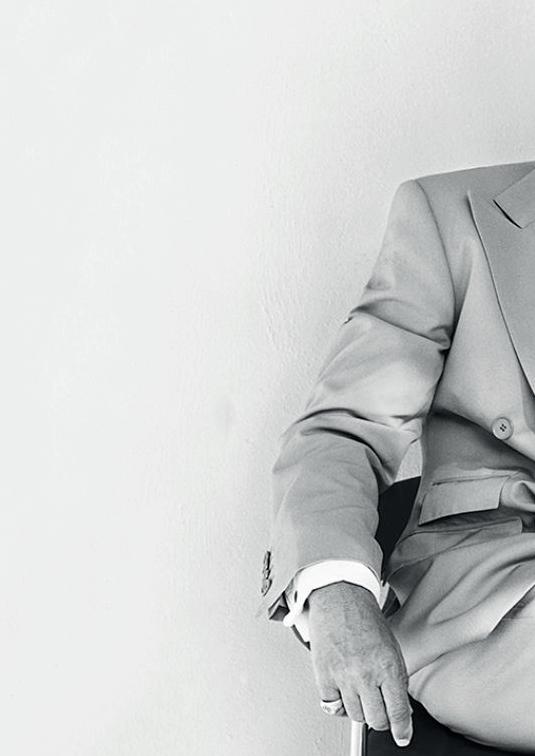
LOOKING GOOD AT O
On 4 June 2018, the international fashion community paid honour to the best and brightest in design at the CFDA Fashion Awards. Founded in the early 1980’s, the awards are the highest accolade in fashion and recognises the outstanding contributions made to fashion in womenswear, menswear, accessories and emerging talent, as well as journalism, creative vision, personal style, positive change, and lifetime achievement.
This year, Ralph Lauren will has been honoured with a tribute at the awards ceremony as the iconic brand turns 50. Celebrating the impact the company has had on the fashion industry, marking the occasion with a Members Salute, the CFDA saw over 500 members pay tribute to the designer with the highest honour.
Ralph Lauren is no stranger to CFDA, with a string of awards over the years, including the prestigious Lifetime Achievement Award which was won an unprecedented two times. Starting over 50 years ago with a range of ties, the namesake label went on to establish itself as one of the most successful American fashion brands of all time. Arguably one of the most recognised brands in the world, the polo insignia features on a huge range of clothing, accessories, and even fragrances and home decor. There’s even restaurants, bars and hotels on their enviable and impressive business portfolio.
Born in The Bronx, NYC, Lauren was the youngest of four siblings to his Jewish immigrant parents, and went on to study business at university, before dropping out after just 2 years. He served in the armed forces before entering into the fashion world by working as a sales assistant in a menswear store. After convincing the owners to let him start his own tie range, the rest is history.
Now with over 10,000 employees worldwide, Lauren is renowned for his philanthropic foundations and charities. Using his wealth for good makes him a much loved figure in both the fashion and business world. In his personal like Lauren has a penchant for exotic are rare sports cars, and has a collection of over 100 vehicles, ranging from vintage Bugatti’s to modern-day McLaren hyper cars.
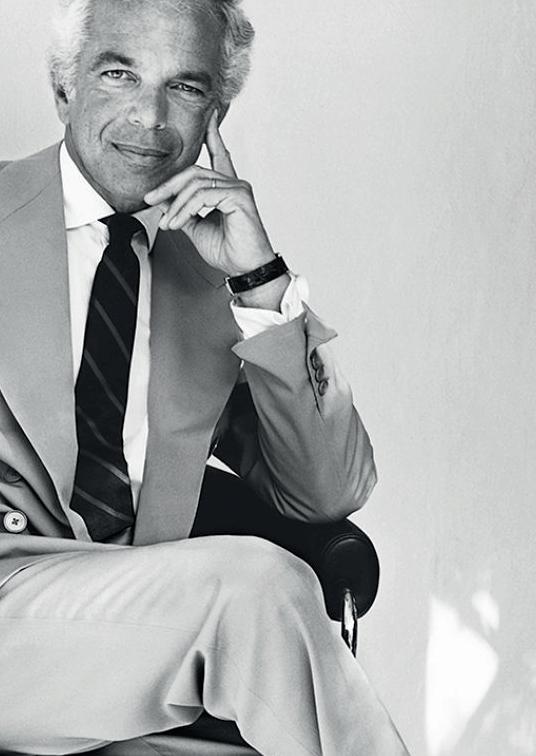
The Executive Magazine | 51 Fashion


Baselworld The Stars Of The Show

Once again the usually quiet corner of Switzerland plays host to Baselworld, the biggest and most exciting watch and timepiece show in the world. The Executive Magazine brings you the best of a jam-packed event.
OOpening its doors for a week from 22 March, Baselworld, the most renowned and specialised trade show for watchmakers and jewellery aficionados, reported a near 10% increase in the number of professional visitors attending this year’s edition.
The chief executives of major brands –spanning everything from Swiss giants Chopard, TAG Heuer and Hublot to Japanese watchmaker Seiko – sang the praises of the 2018 iteration, which they claimed is an “essential time of the year for the industry” due to its notorious appeal to key retailers, clients and trade journalists. The event’s managing director, Sylvie Ritter, said that 80% of Swiss watch exports were represented at this year’s event, making Baselworld “the preeminent specialised trade show” for the industry. And truly, the 2018 edition was not one to be missed.
As expected, the brand on everyone’s lips during the weeklong show was the grandfather of all watchmakers, Swiss market leader Rolex. One of its most anticipated releases of the year – and the
model that you could argue stole the show amongst its sister releases – was the GMT Master II, a stunning steel piece on a five-link Jubilee bracelet with a red and blue bezel that the company branded “the perfect watch for global travellers.” Originally created to help airline pilots navigate, the newest model was designed to display two time zones at once, making it the ideal purchase for those of us who love to – or have to – hop from one place to the next.
Of course, the GMT Master wasn’t alone in this year’s Rolex reveal – but surprisingly, at just £6,800, it was certainly amongst its most affordable. More luxurious versions include options in Oystersteel and Everose gold (£10,350) and just Everose gold (£26,950). And, for those wishing to go all out, the gem-set version of the Cosmograph Daytona is the perfect fit: boasting a graduation of sapphires in rainbow hues and 56 brilliant-cut diamonds, the shimmering new addition is so opulent that its price tag is only available upon request (in other words – be prepared to spend some cash).
But despite its mammoth reputation and the hoards of fans it drew in from day one, Rolex wasn’t the only star of the show. Omega wowed enthusiasts by releasing a stunning limited edition of its classic Seamaster watch, first launched in 1948 as part of the brand’s flagship
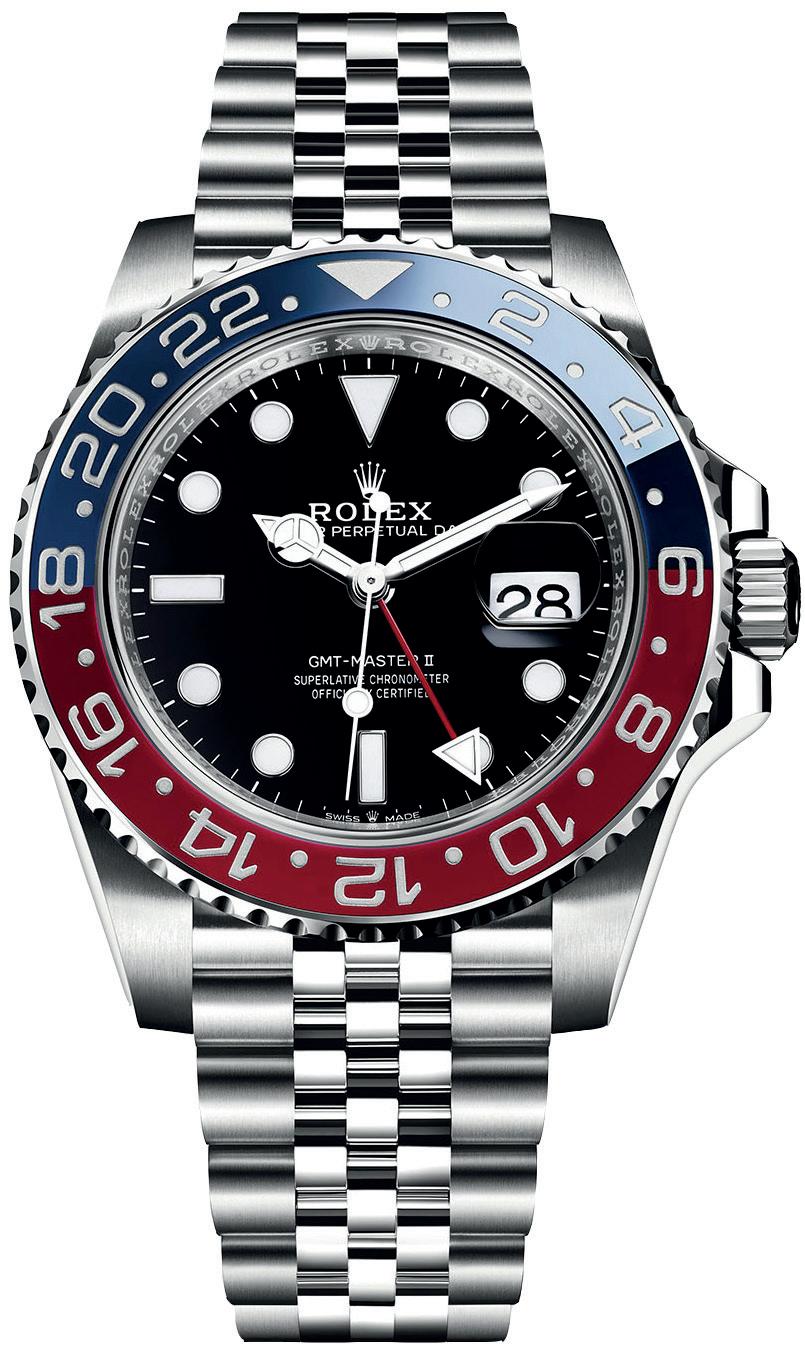
54 | The Executive Magazine
Fashion
collection but recreated this year to mark its 70th anniversary. As you would expect from a classic re-release of a post-war piece –a James Bond favourite, no less – the refreshed Seamaster has retained all its vintage glory, calling back to its early years with stainless steel cases, silvery domed dial and classic applied markers. Inside, though, it’s all but retro: the Swiss sweetheart is thoroughly modern and automatic, featuring METAS-certified calibres with coaxial escapements. But as the name suggests, it’s a limited edition release, with just 1,948 pieces on the market –so don’t miss out.
One of the major talking points this year was Hublot’s new Big Bang Referee 2018 FIFA World Cup Russia which, despite its less attractive shell, makes up for any aesthetic let-downs with its innovative appeal: by harnessing Google’s Wear OS straight out of the box, the smart watch will instantly connect wearers to every match played during this year’s World Cup. According to the company, the watch was created specifically to accompany referees on the pitches during matches – a move that FIFA’s chief commercial officer, Philippe Le Floc’h, called the “perfect illustration of Hublot’s ability to combine tradition, expert knowledge and innovation.”
And if it couldn’t already be exclusive enough, the famous watchmaker announced that production is limited to just 2,018 pieces, available from 1 May in sales outlets.
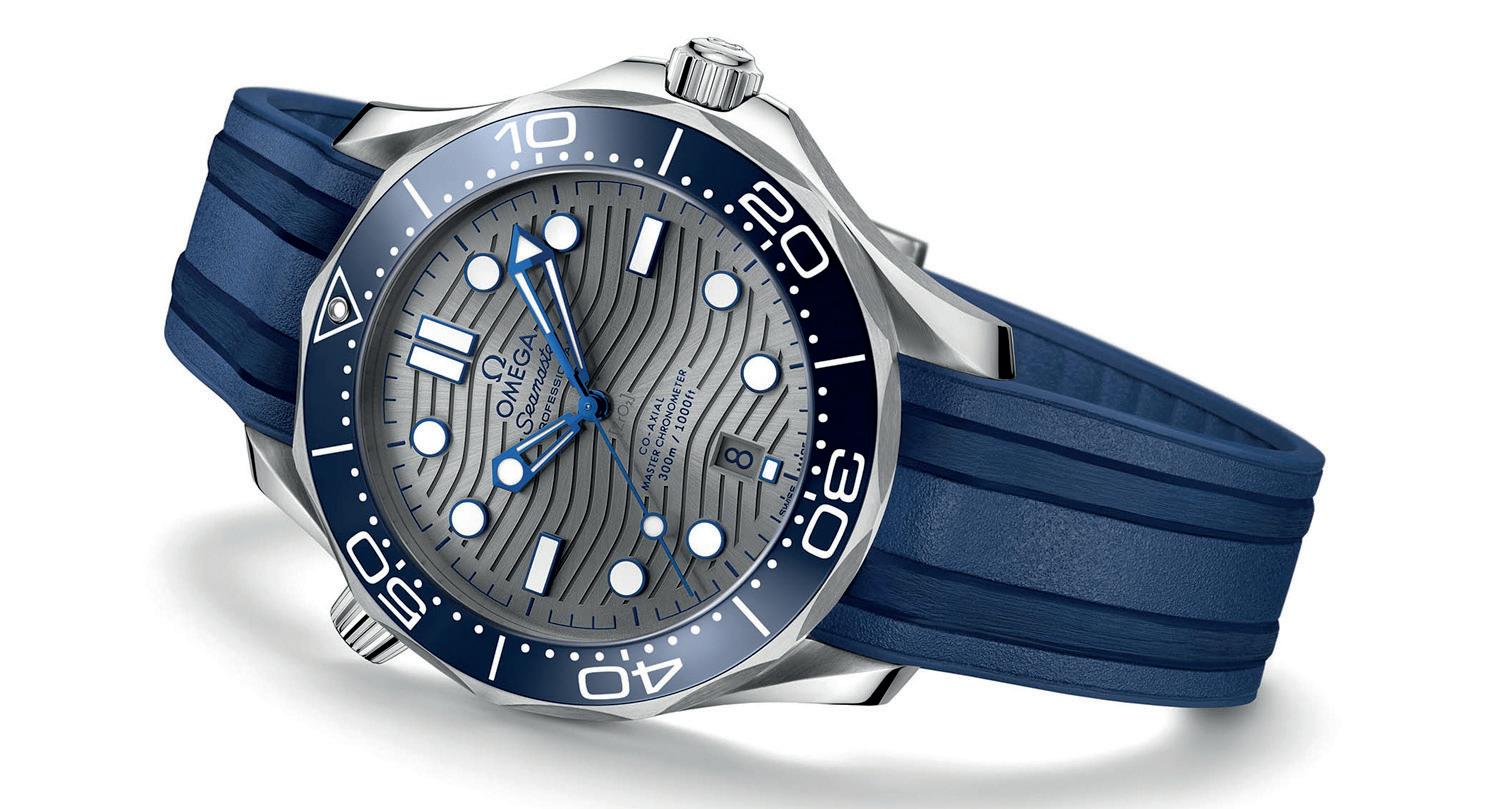

For those of us looking for something a bit more toned-down, Skagen might have just the thing: its new hybrid Skagen Holst is the ideal pick for watch lovers who like to opt for something stylish, sleek and light, but still packed with all the essentials, including a step tracker. The elegant piece boasts one of the slimmest designs on the hybrid watch market and, for a modest price of just £140, will ensure it’s not just the lightweight frame that makes it so discreet – but its imperceptible effect on your pocket, too.
On the opposite end of the spectrum, this year’s Baselworld did not disappoint when it came down to adventurous watchmaking. One of the standout features was MB&F’s brandnew machine, The Fifth Element, which the Swiss brand called an “intergalactic horological weather station enabling accurate weather forecasting even when the power goes down.”
Boasting four key elements – clock, barometer, hygrometer and thermometer – the flagship piece, adorned with spaceship-like pods siting atop a silver ‘alien,’ looks as impressive, and as extra-terrestrial, as it sounds.
Fashion

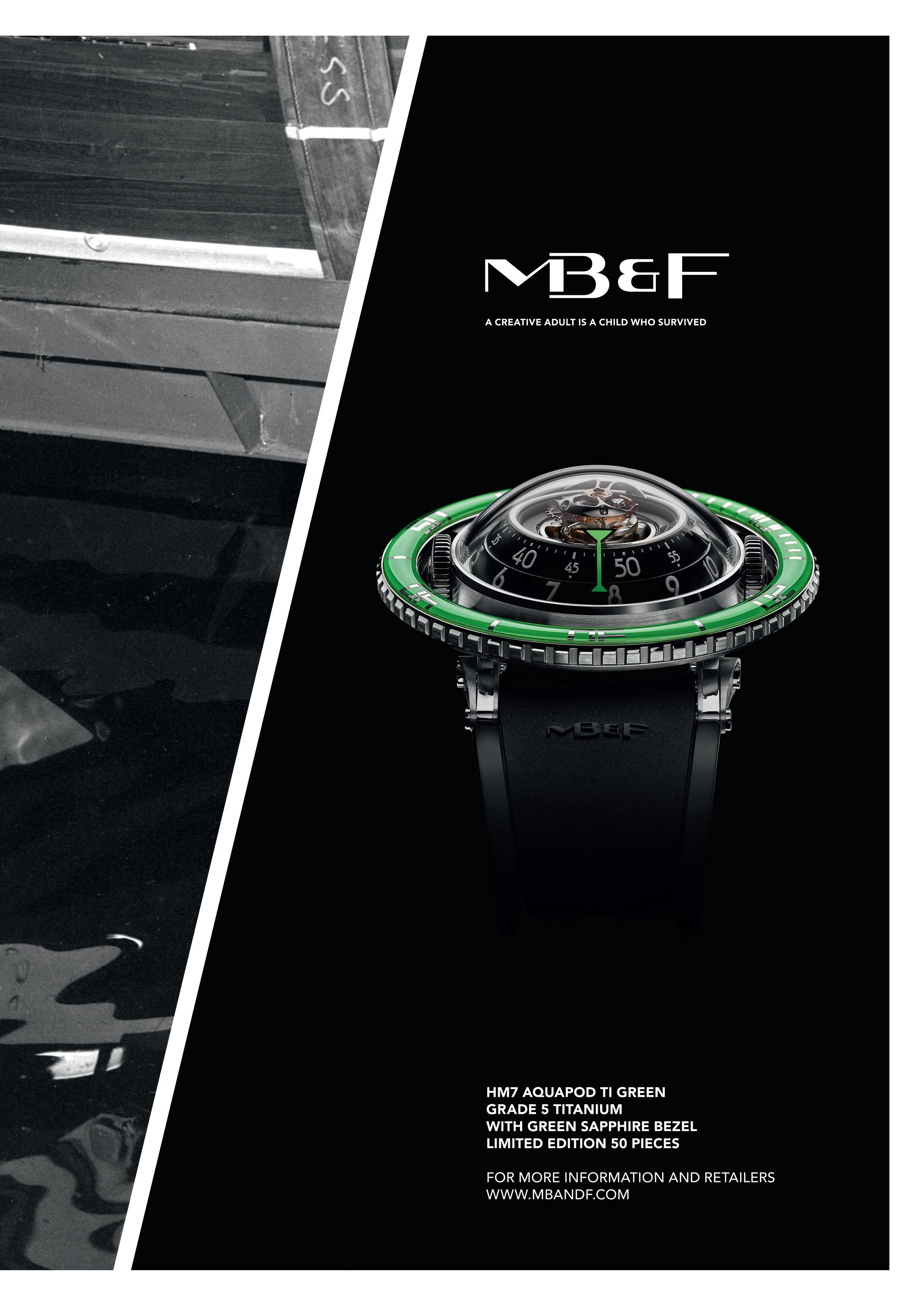
The Executive Magazine looks at the best wireless headphones for 2018.

The Best Wireless Headphones W
With Apple standing firm on their decision to remove the headphone jack from their iPhones, if you want to stick with the brand, you’re going to have no option but to switch to wireless technology for your personal audio needs. So rather than fight the system, we’re embracing it, and checking out the best wireless headphones. From just a year ago the advancements made in bluetooth powered audio systems has come on in leaps and bounds, and some of the offerings from the big players with impress even the most diehard audiophiles.
Here are some of our top rated headphones and earphones for quality, durability, price and ease of use.
Bose SoundSport Pulse
Bose have once again impressed audiophiles with their entrance into the wireless bluetooth earphone market, and the SoundSport Pulse are, as the name suggests, a sports orientated earphone. Designed for maximum style, comfort and lasting power, The SoundSport Pulse combines all of Bose’s audio expertise that we love with the durability for even the most enthusiastic gym-goer.
£199.00
Jabra Elite Sport
Originally born in 2016, the latest versions of the Jabra Elite Sport in-ear headphones feature a hugely improved battery life, are lighter, and fully waterproof. The charging case is a welcomed addition, and a range of interesting features are activated through the companies very own app, such as a heart rate monitor and audio coaching. The Jabra Elite Sport also comes complete with with interchangeable silicone ear pieces, allowing the perfect fit for any user. The sound quality is excellent, and we would recommend these ear phones for the more active and sporty user.
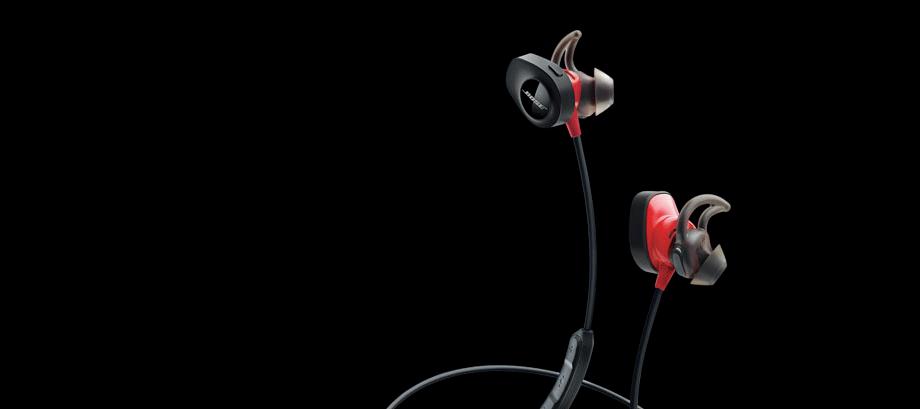
£229.00

58 | The Executive Magazine Tech
SoundMagic E10BT-BK

SoundMagic are a Japanese company that you may be forgiven for not knowing about, but these budget earphones have proudly earned their spot on our list. They’re one of the cheapest earphones on the market, but offer superior sound quality than those 3 or 4 times more expensive. They’re solid, comfortable and perfect for throwing in your gym bag or stuffing in your jacket pocket without the worry of costly damage.
AKG N60 NC Wireless

The AKG N60 NC Wireless earphones made it onto our list not only for their exceptional sound quality, but for their superior battery life. Giving you 15 hours of playback time on just a single charge means the AKG’s outlast all it’s competitors with ease. Featuring active noise cancelling functionality and a simple foldaway design, these earphones are a great all-round example.
Bang & Olufsen BeoPlay E8
The Rolls-Royce of speakers and audio technology Bang & Olufsen have developed the E8s as a direct response to the Apple AirPods, and straight away we can see a clear winner. These sporty yet elegant truly wireless earphones are a design marvel, we love the way they look and feel, and the superior sound quality blows the competition out of the water. Featuring a magnetic carry case and tap gesture control, these are the most versatile option on our list.
Bowers & Wilkins P7


A Bowers & Wilkins sound system may adorn your Maserati or BMW, but they have been leaders in the personal audio sector for over 50 years, so they know a thing or two about headphones. The latest offering supersedes the very successful P5 Wireless Bluetooth headphones, with improvements including a higher emphasis on bass, a sleek aluminium casings, and improved battery life. The sound quality is supreme, and if over the ear headphones are your preference, these are our top pic of the bunch.
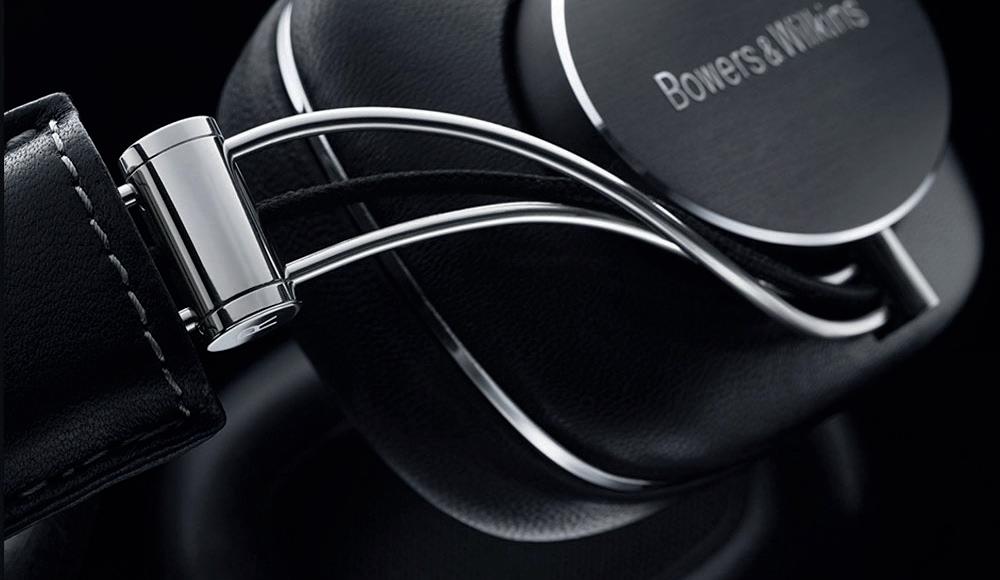
Sony WF1000X
These wireless noise cancelling headphones from Sony are discreet, compact and comfortable, with the most advanced noise cancellation technology ever seen in a wireless earphone. Featuring Sony’s patented Sense Engine, as well as adaptive ambient sound control, these small miracles are perfect for a noisy commute, and won’t let you miss important announcement or distract your from urban danger.
The Executive Magazine | 59 Tech
£59.00 £199.00 £319.00 £259.00 £180.00


Delights Thai
The Best Modern Thai Restaurants In London
From Kiln to Som Saa, a bright and spicy revolution is here
OOn a similar trajectory to Indian restaurants before their recent revival, Thai food was oft relegated to sad takeaway boxes. A land of sugary green curries and limp spring rolls, devoid of the bright flavours that are the very essence of the cuisine.
Then something happened. A city bored by homogeneous pad thai was thrown a lifeline in the form of genuinely exciting Asian flavours, with the steady emergence of a new type of Thai restaurant that has been hard to miss.

These spots offer more exotic dishes than the sweet curries that have been churned out of chains over the last 10 years. Grilled fish, head and all, comes with flesh that falls apart, soups are gloopy and glorious with a depth of spice beyond just eyewatering and herbs are thrown on whole rather than shredded and hidden.
The Begging Bowl
One of the first to the scene when it come to authentic Thai street food, the Begging Bowl's quality nonetheless hasn't wavered. The menu has evolved but kept some of the classic hits and the limitless rice side dish is an excellent way to soak up pools of sauce and a few Kafr Sour gin cocktails.
Dig into smaller plates like the lemongrass minced pork with roasted rice or the crispy squid which pops in your mouth with their sour chilli dip. Leave room for a Geng som curry with wild turbot and finish with the banana fritters in coconut sesame batter and peanut brittle.
The Begging Bowl, 168 Bellenden Road

62 | The Executive Magazine
Food
Kiln
Where other open kitchens flaunt Big Green Eggs and sousvides, Kiln, opened by Ben Chapman of Smoking Goat fame, goes far more rustic: assorted clay pots filled with embers, over which the bijoux restaurant's excellent Northern Thai street foodinfluenced dishes are prepared.

Perhaps it's the simplicity of the technology that gives the kitchen an unusually calm, laid-back feel. Perhaps it's the confidence that the cooking will speak for itself. Perhaps it's the reggae on the stereo. Whatever, you'll find a particular mellow joy — despite the occasional chilli hit — in baked glass noodles with Tamworth belly and brown crab meat, or langoustines with kaffir lime and mint.
Kiln, 58 Brewer St, Soho, London W1F 9TL
Som Saa
The journey from Hackney pop-up to number four in the National Restaurant Awards has been remarkable for this uber-trendy East London eatery. Their popularity shows no sign of waining, and with offerings like smoked duck soup or five spice soy braised beef cheek curry, why would it?
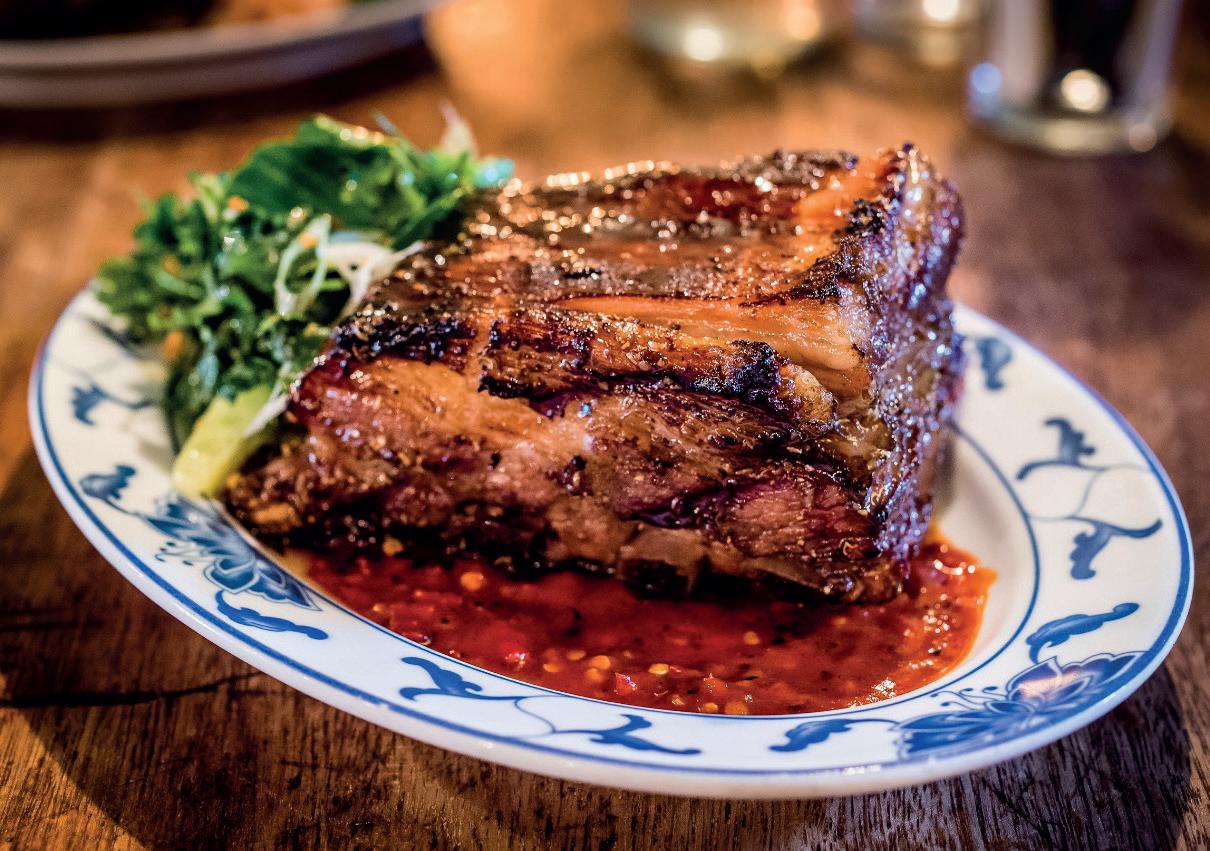

Chef Andy Oliver's two years cooking in Bangkok is obvious in the bright, sour, sweet and sticky dishes he serves up. The signature 'Nahm Dtok Pla Thort' (deep-fried whole sea bass) is crunchy, salty and unctuous mess of deliciousness. Don't wimp out on this one - you'll be scraping the bones clean by the end of the meal.
Som Saa, 43A Commercial St E1 6BD
Smoking Goat
In the small Soho quarters that used to house a dive bar, Smoking Goat wanted to replicate that energy and so play vibrant music in the Thai BBQ restaurant. They specialise in rare produce and use English chestnut wood to burn the fire which gives everything a warmth and sweetness.
The flavours are sharply contrasted but excellently executed -particularly the crispy pork belly with pickled watermelon and picanha beef with lemongrass and chilli. The star of the show is the restaurant's namesake, a smoked goat shoulder with Thai herbs. Order it with sticky rice that you prize from a plastic bag with pink strips of goat which are fatty and tender.
Smoking Goat, 7 Denmark St, WC2H 8LZ
The Executive Magazine | 63 Food






























































































